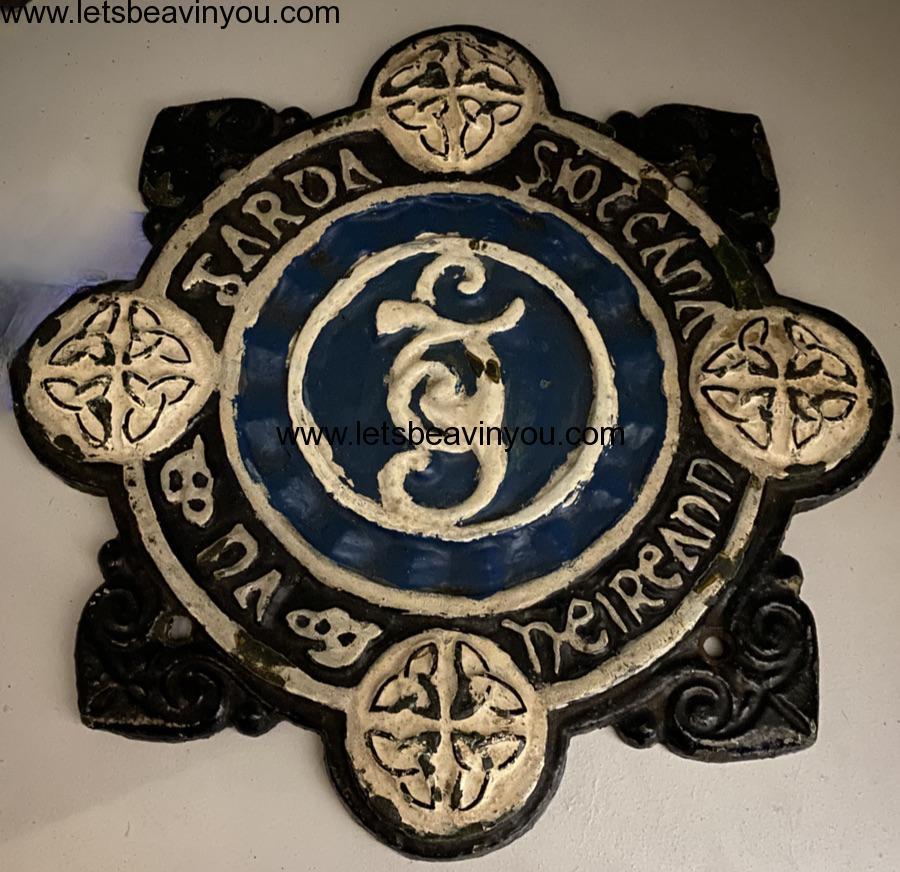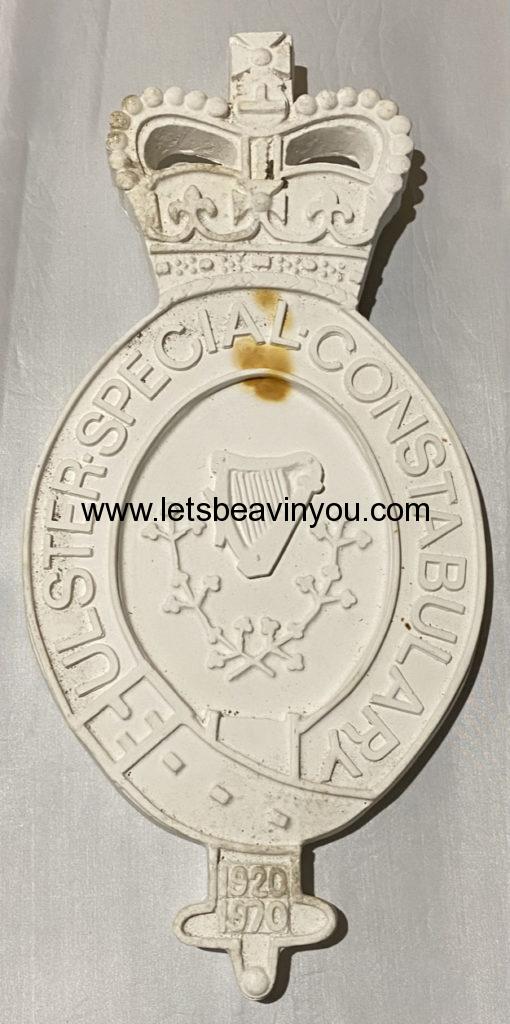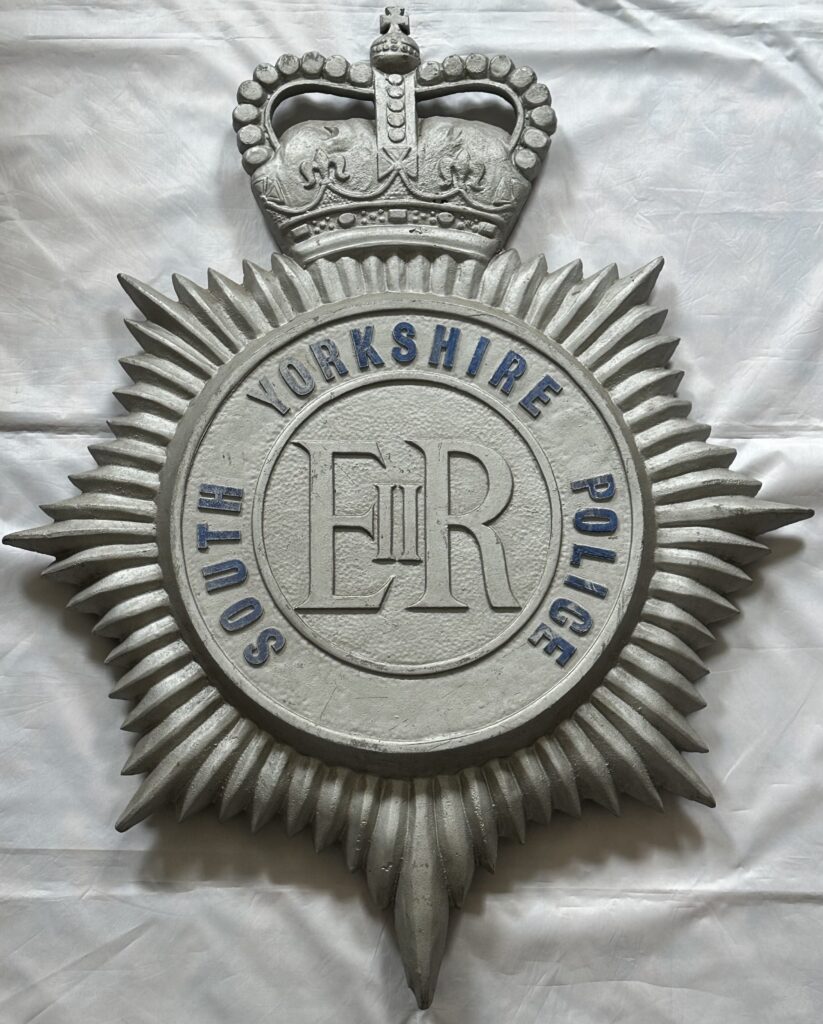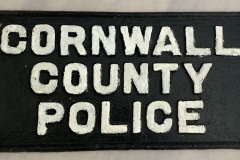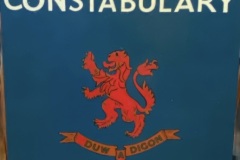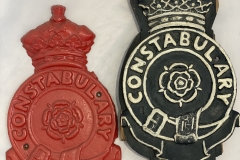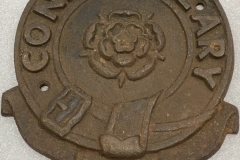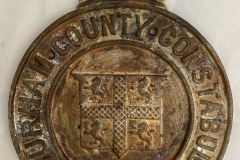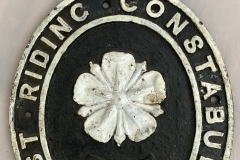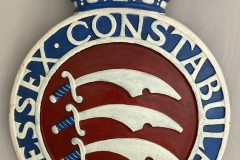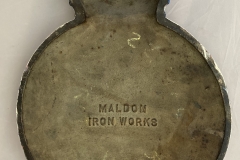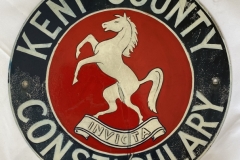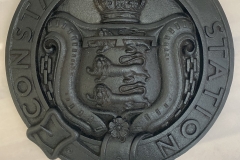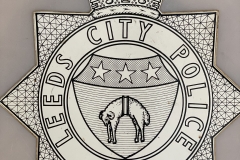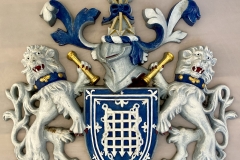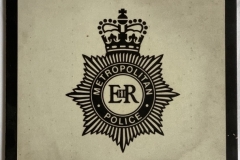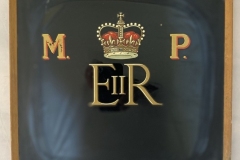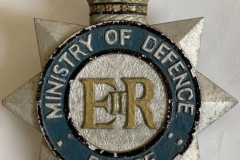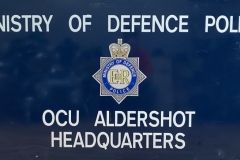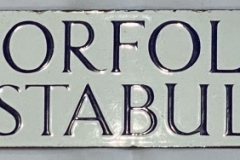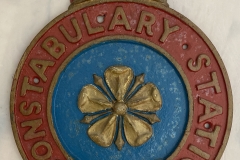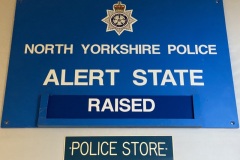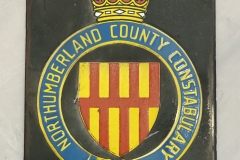My station crest collection sprang from my RIC collection. I just thought that they looked great and they are immensely tactile and resilient being, in the main, cast iron. One became two which became many and now I have crests from across the UK, Ireland and further afield. Ideally those that have original paint I will leave and not try to restore. Those that I have obtained which are unpainted I will generally paint black to prevent rusting. I try not to get mocked up crests with the wrong paint schemes, but sometimes something is better than nothing. To that end I still a couple of real shockers that need to be stripped down and repainted.
I’ve categorised my crests by location and as per most of my pages, there is a gallery at the end showing everything (that I had at the time). Latest update was December 2023.
Ireland
As I’ve already mentioned, my first ever police badge was a Victorian example of the Royal Irish Constabulary. These were changing hands for up to £1000 each ten or so years ago, but prices have now softened and I have seen them change hands for as little as £450, although £600-700 seems about the average as at 2020. The Victorian example is said to be more plentiful (given her Majesty’s long life span) and the relatively short period of the twientieth century before Irish independence. Thus the King’s crown example is said to be rarer, but that is hearsay and I’ve not found any reference or article to back that up one way or another.
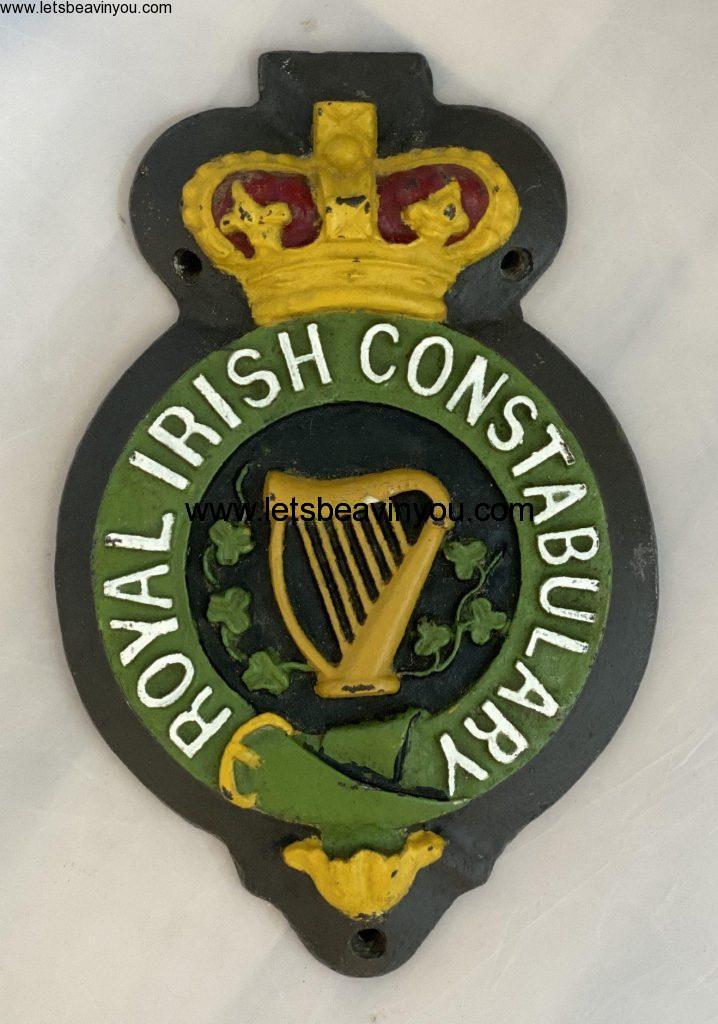
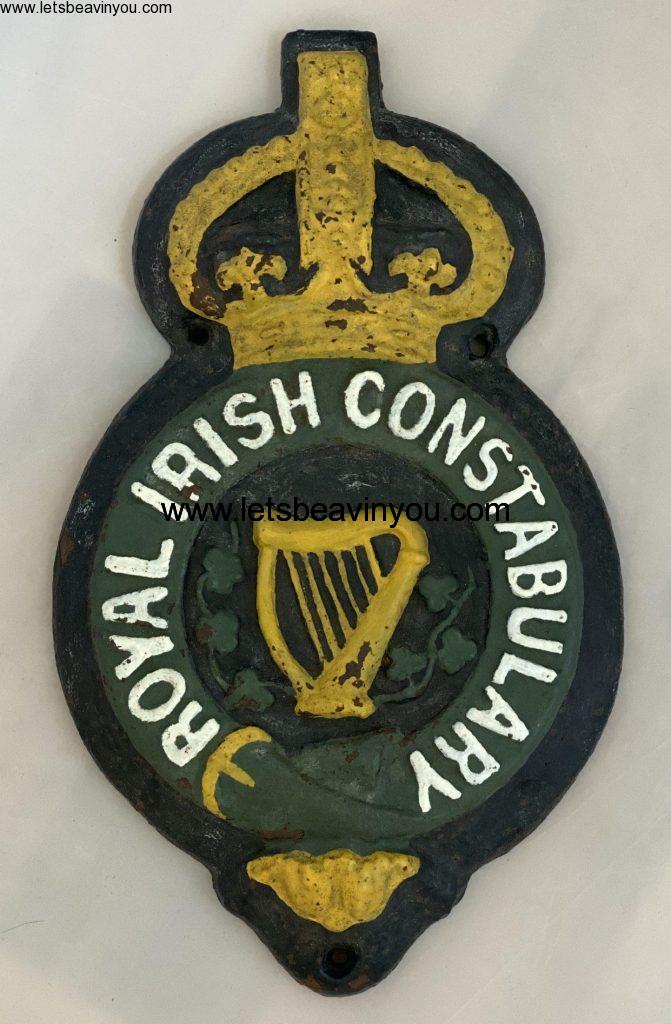
Two Kings Crown examples
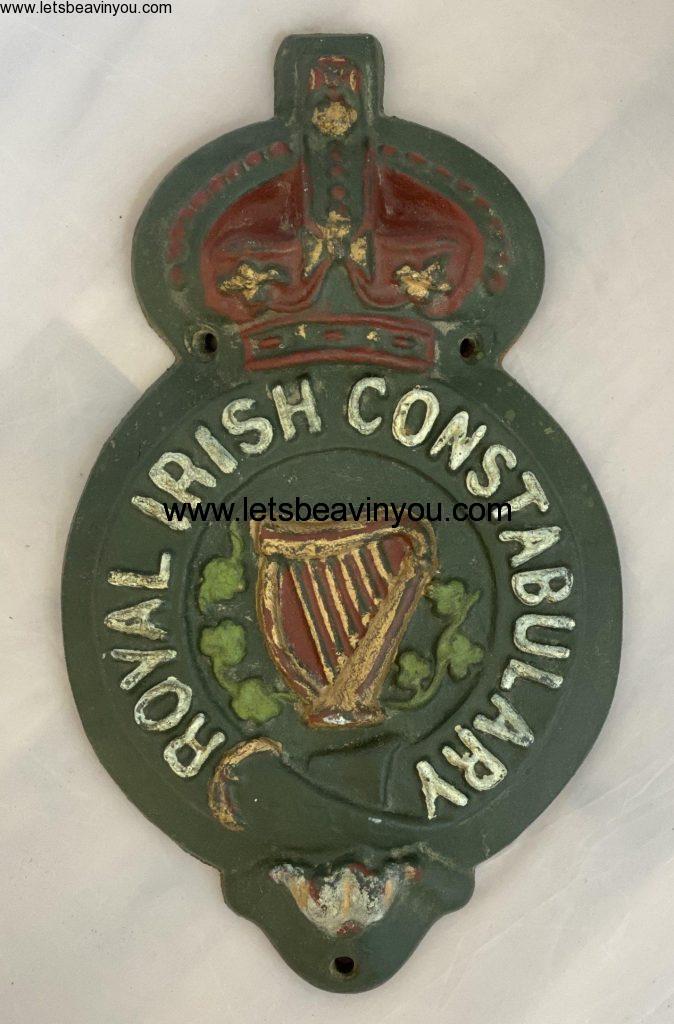
And although in reverse date order, the crest of the Constabulary of Ireland. This is a very rare Station Badge
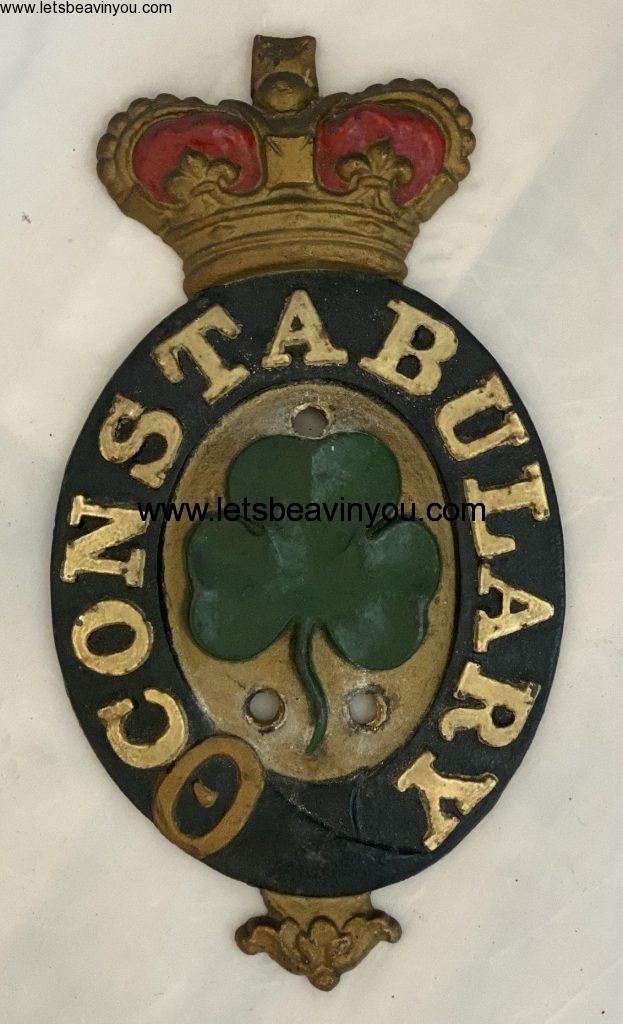
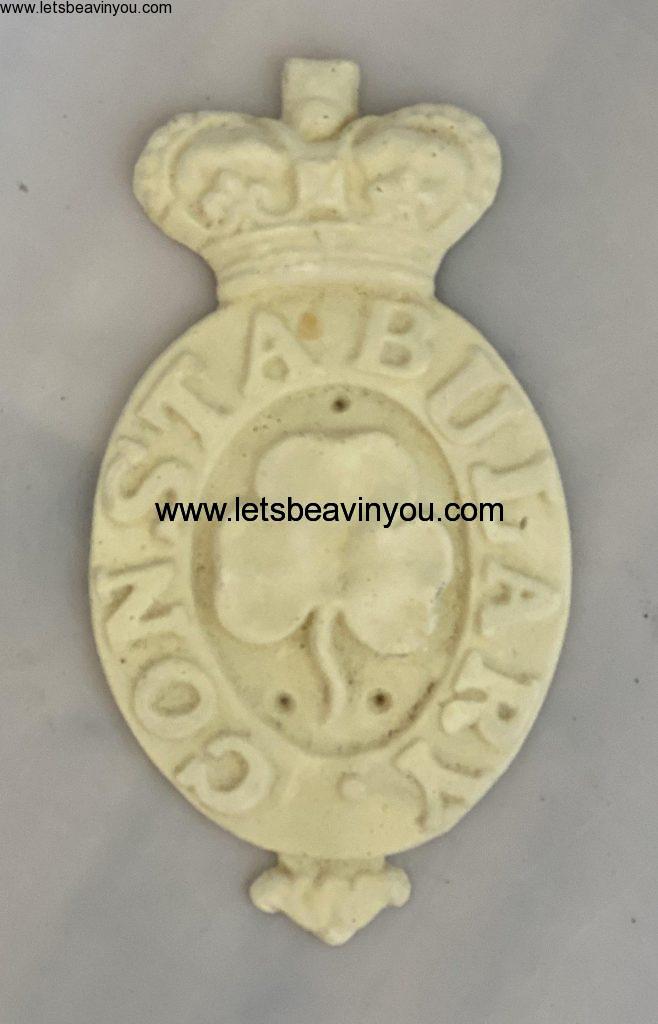
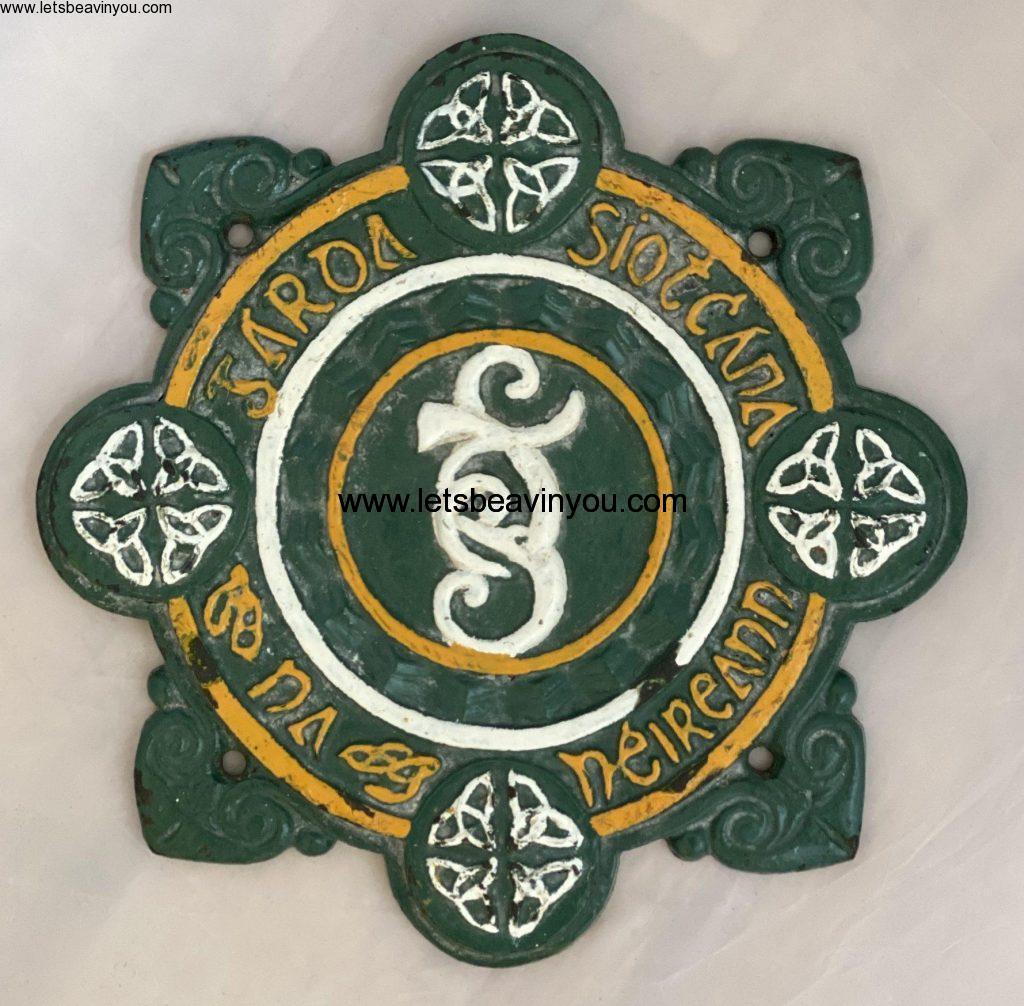
I have other examples of RIC Badges which you can view in the Gallery at the end. Although these are not Barrack crests, the following RUC plaques fit here. They are 16 inches (circa 41cm) long so just a bit bigger than the RIC Badge. I don’t know if they were designed as decorative pieces, or for presentation. If you know anything about these crests I’d be pleased to hear from you.
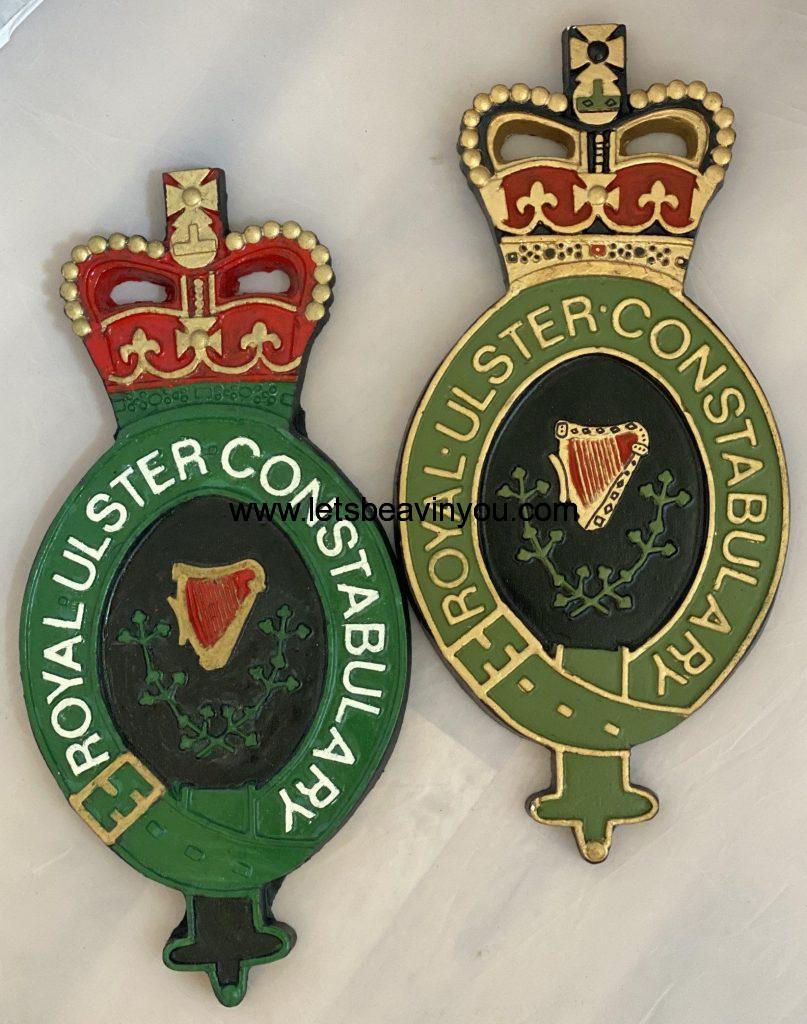
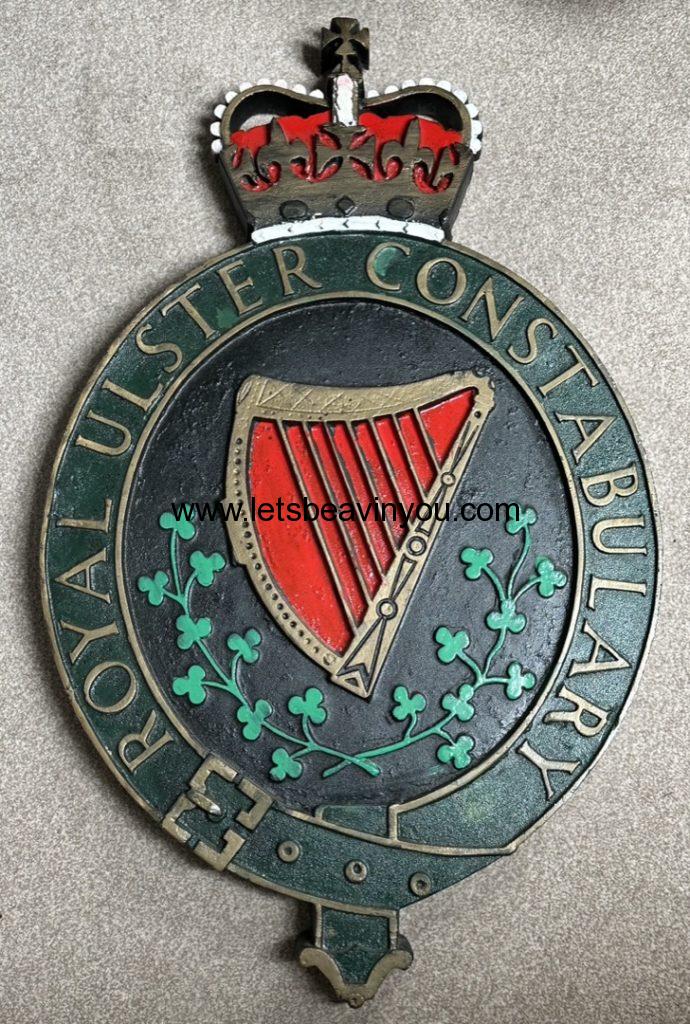
Once the station bug hit I wanted to expand, but it’s not easy to get hold of them; in part because the older ones are rare and can be expensive, but also because the more modern ones are either still on the front of police stations – where they need to stay – or, in the case of the RUC crest, because for several years the PSNI rightly ensured that they did not wrongfully fall into private hands. I’m not sure if this has been officially relaxed or not, but I have noticed two RUC crests sold at auction in the Republic and many were officially presented as momentos to worthy individuals or organisations – there is one for example at the Garda Training College at Templemore. Given that it is now nearly 20 years since the PSNI was established, a number of individuals who were given these crests could have passed away and their estate legitimately sold on. This particular example sold at auction in Northern Ireland in summer 2022.
The only other crests still outstanding are the PSNI and Superintendent’s Association of NI. To the best of my knowledge, the DMP didn’t have a force crest on their stations, but if you know better, please send a link to a photo.
England and Wales
English crests come in all shapes, sizes and materials and there was little or no standardisation of production. I have yet to find a definitive work about these crests and with the exception of police officers taking one as a retirement souvenir, not much interest in saving them. Many would have simply been scrapped when their station was decommissioned or the force amalgamated with a neighbour. For that reason these crests are relatively rare (some extremely so), but there’s not much interest in them so they are not hugely valuable. Again, they are all listed in the gallery at the end of the page, so this is just a sample.
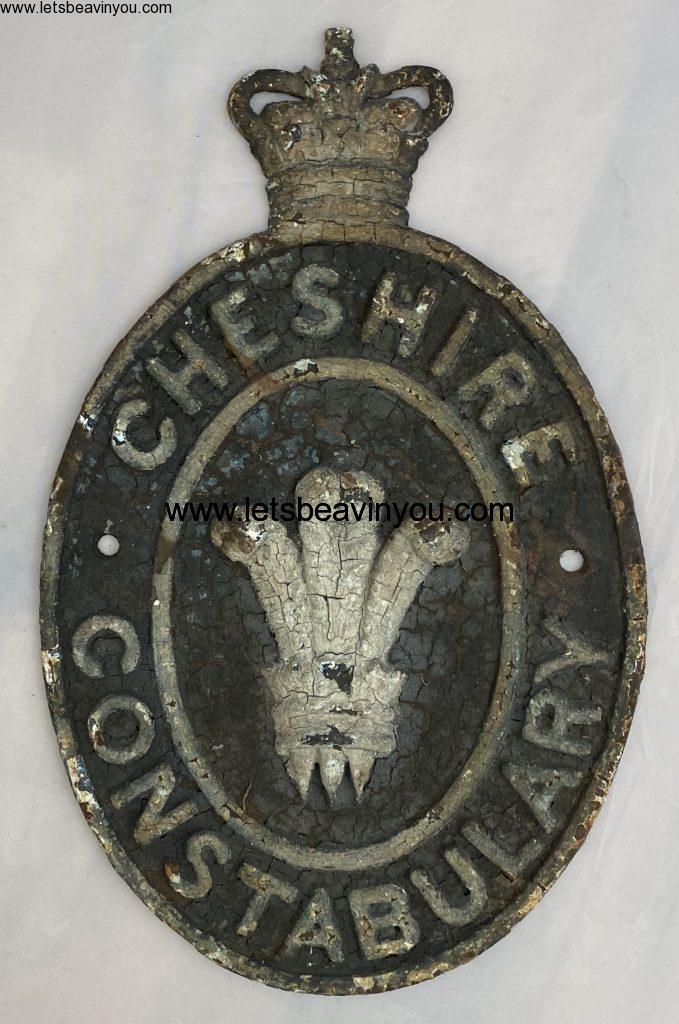
Possibly the oldest English crest in my collection, this Cheshire Constabulary crest stems from the Victorian era and has the original paint which I personally think is preferable to restoration.
The next two crests are Welsh, this cast-iron example from Prembrokeshire and the next, a painted wooden sign from North Wales:
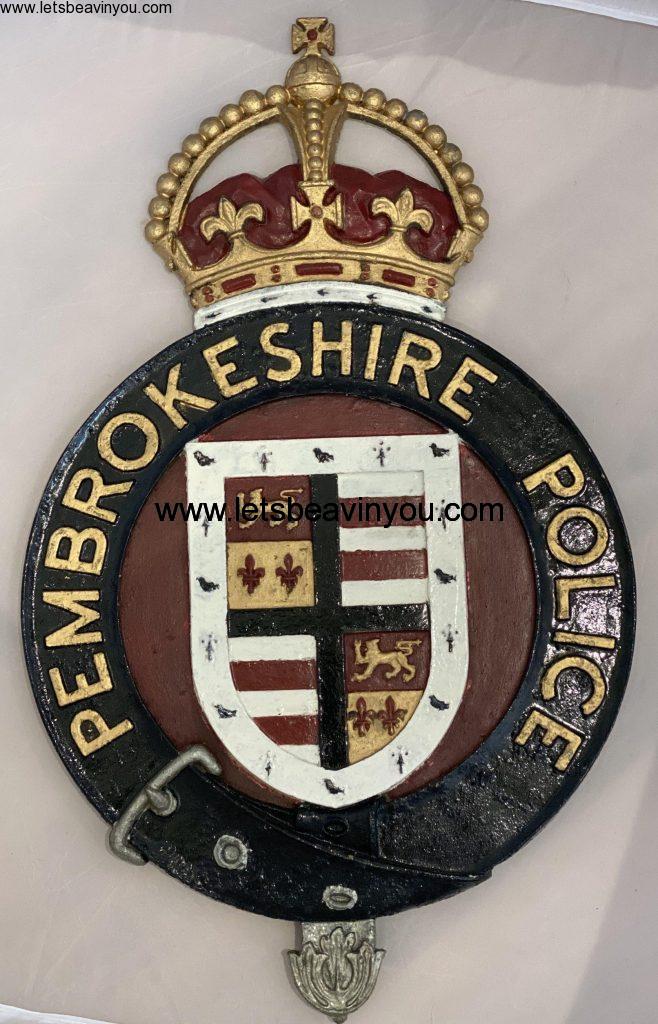
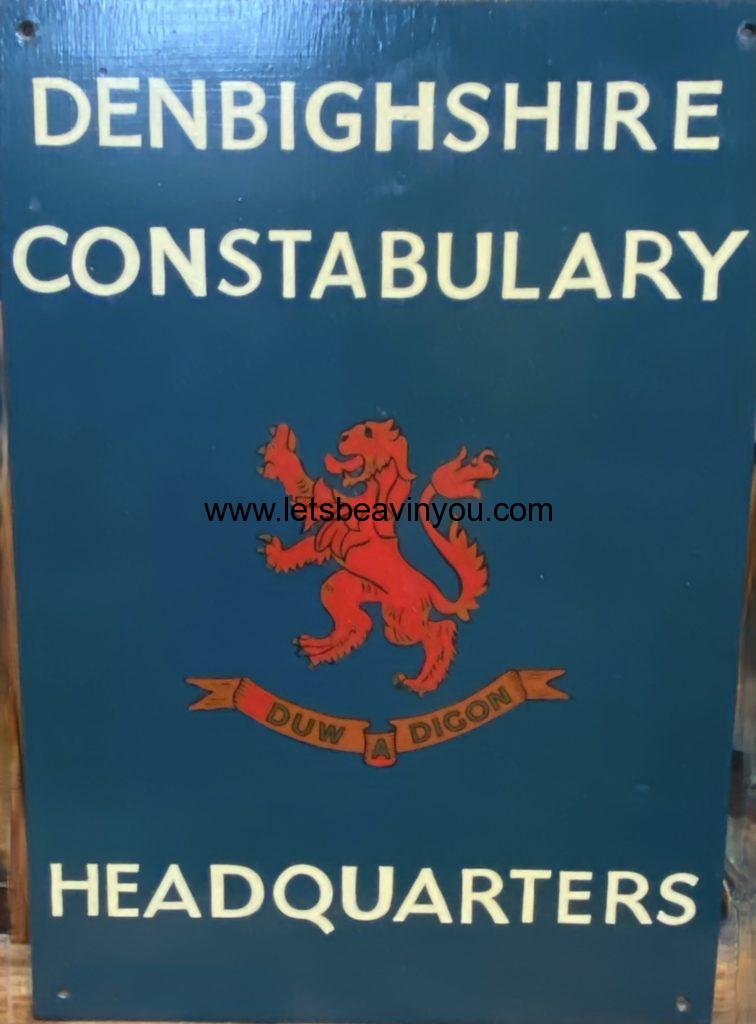
The crest below is one of my favourites. It is also one of the most ornate: cast iron and circa 2 feet square. It’s also incredibly heavy, so doesn’t get moved much. Below it is a standard WR crest which would have been on the house of the local station officer.
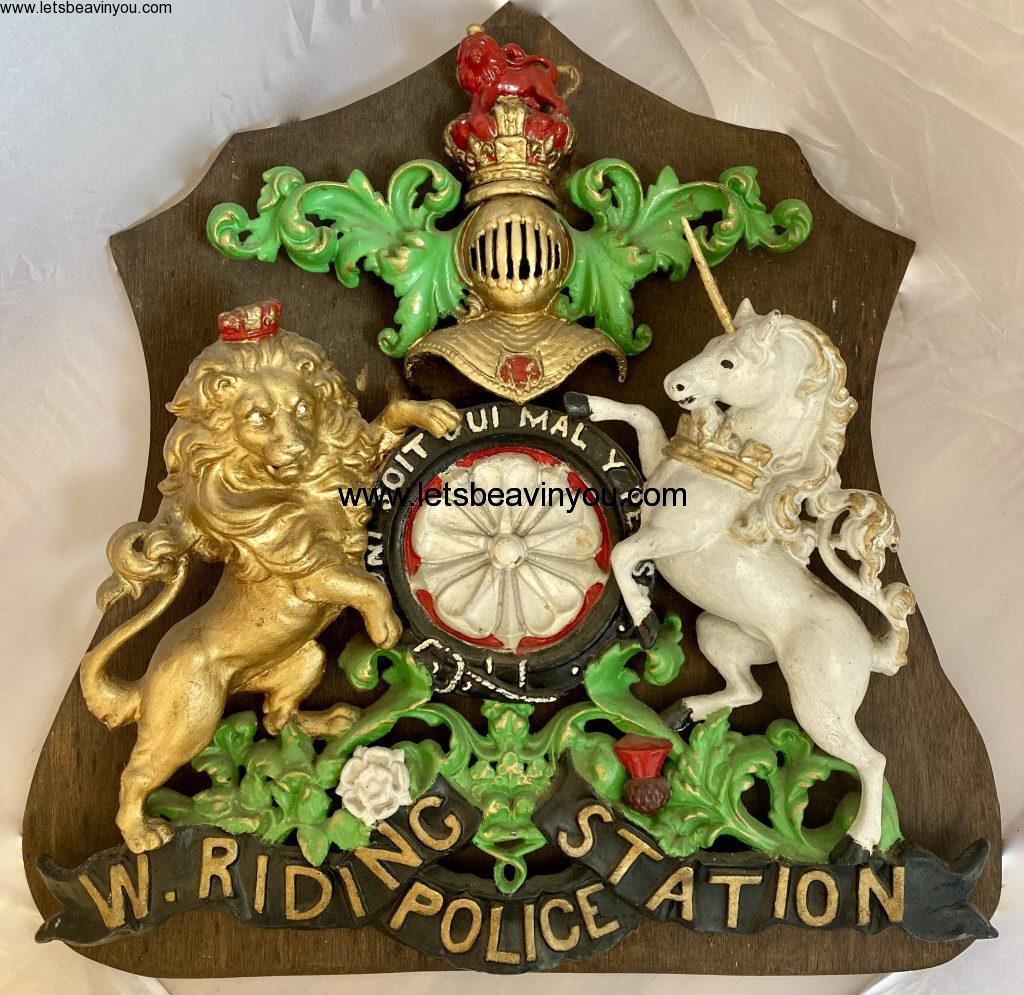
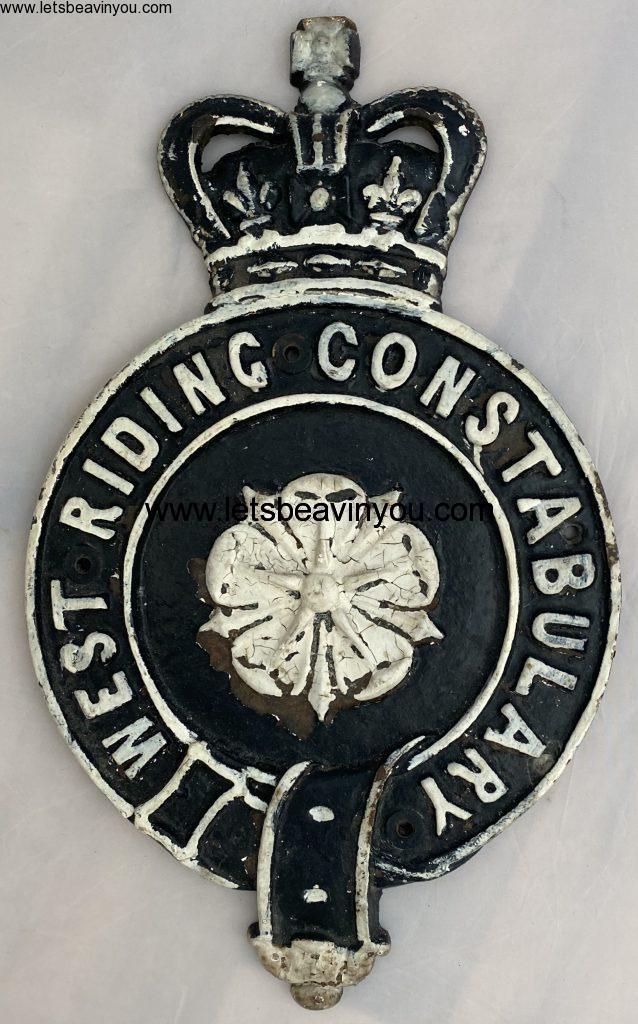
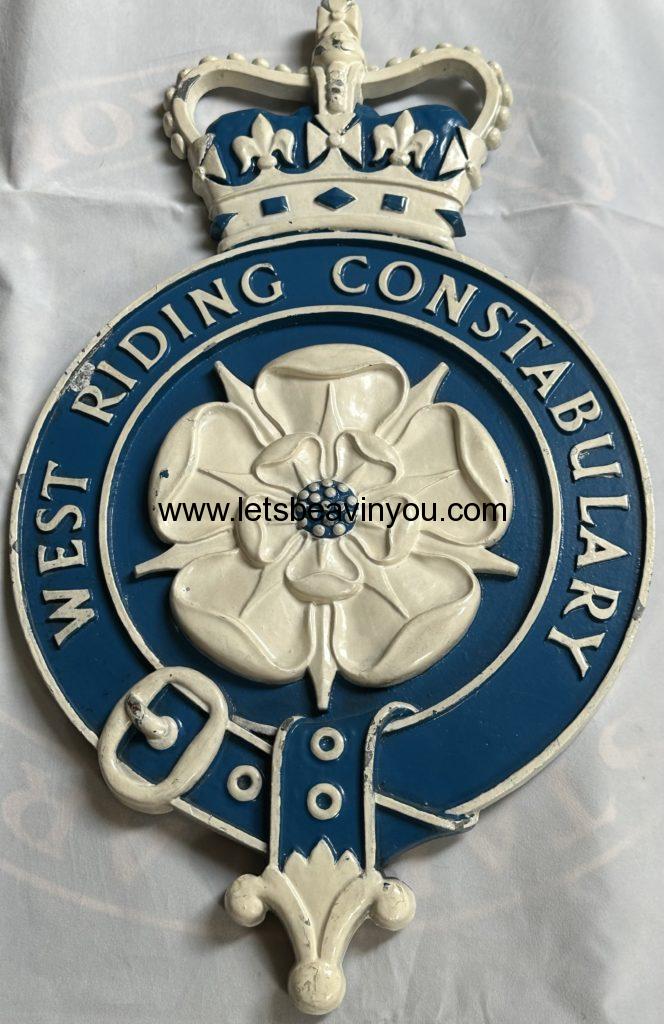
The above crest was stated as coming from ‘Beat House’.
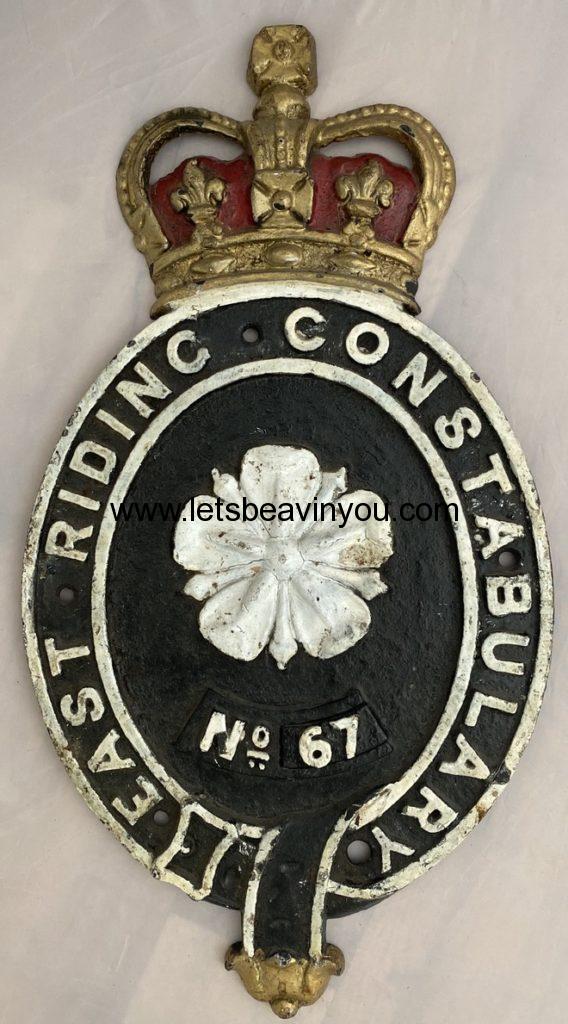
The next crests are included to show the diversity in style, shape and material.
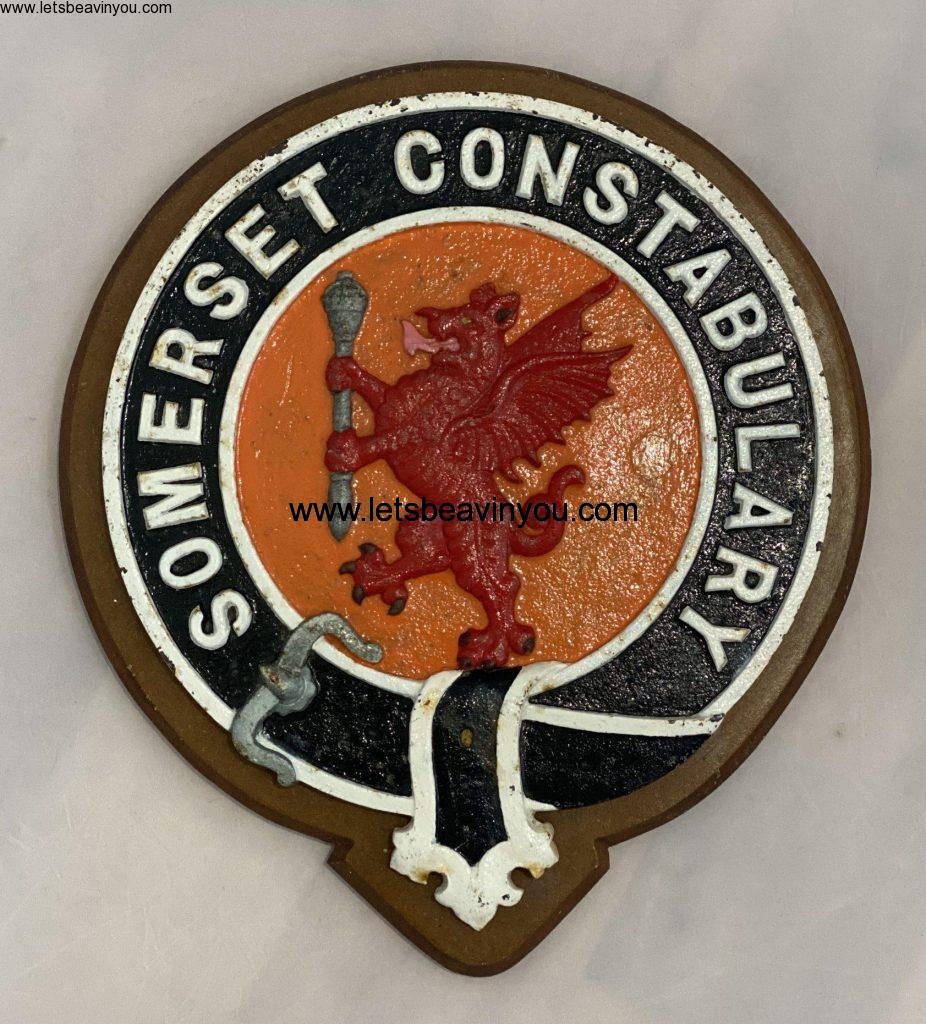

A rare double sided sign

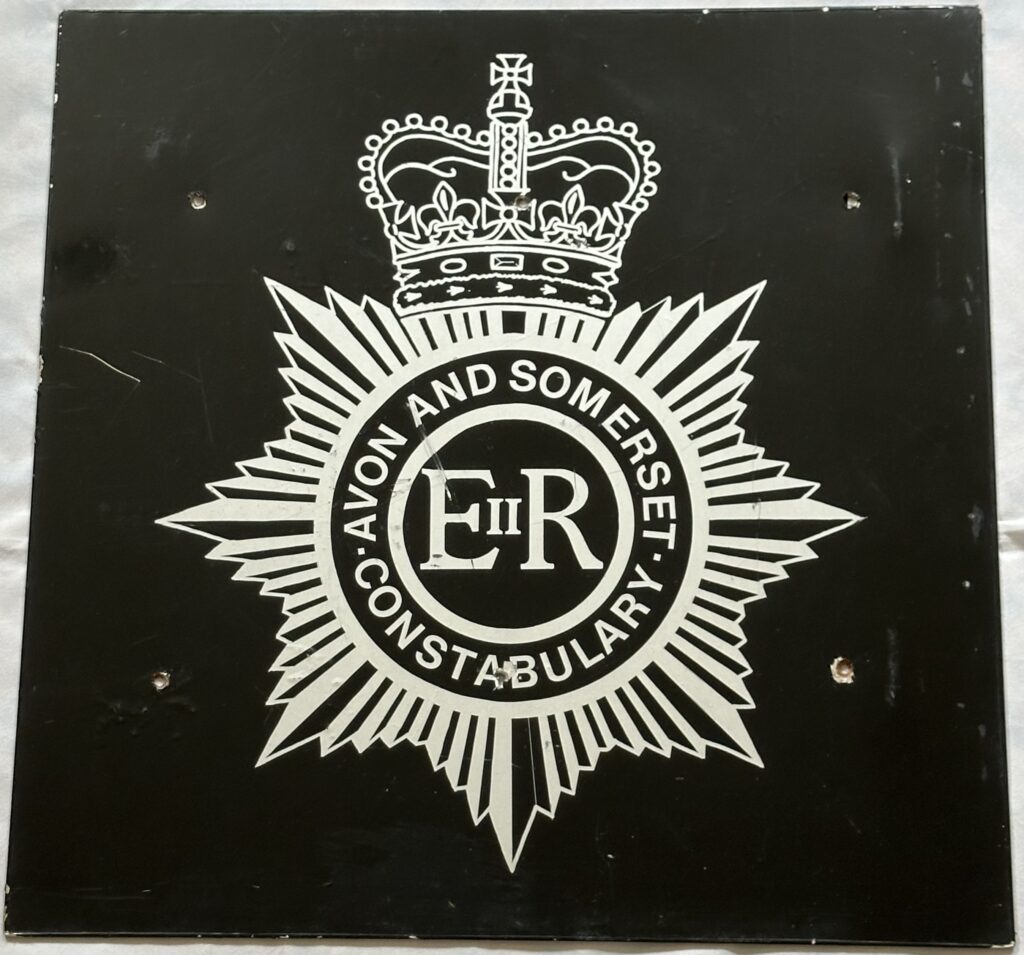
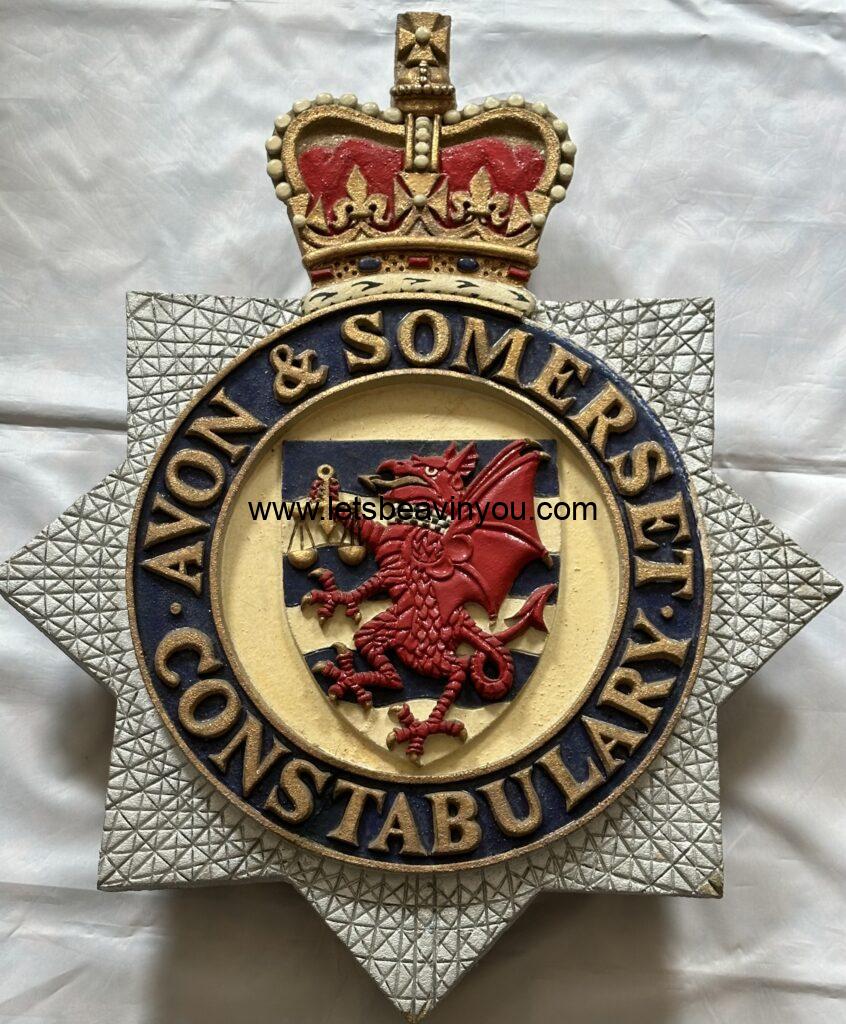
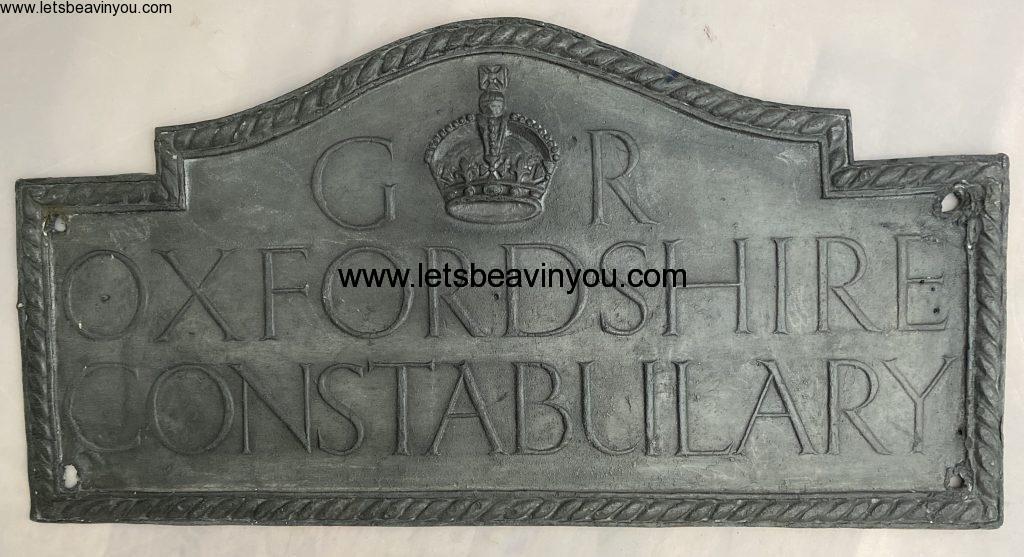
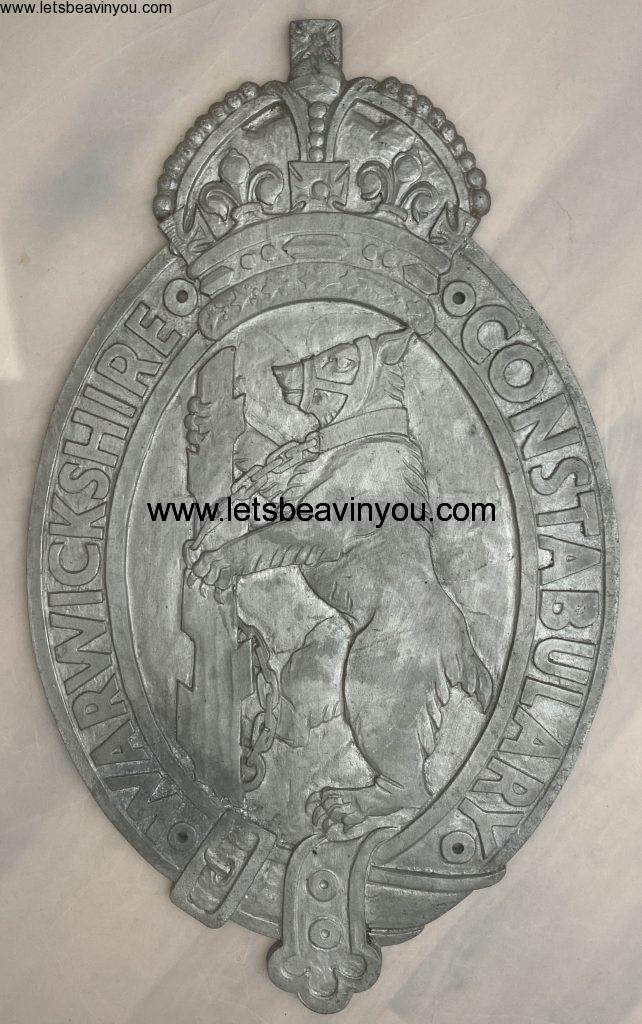
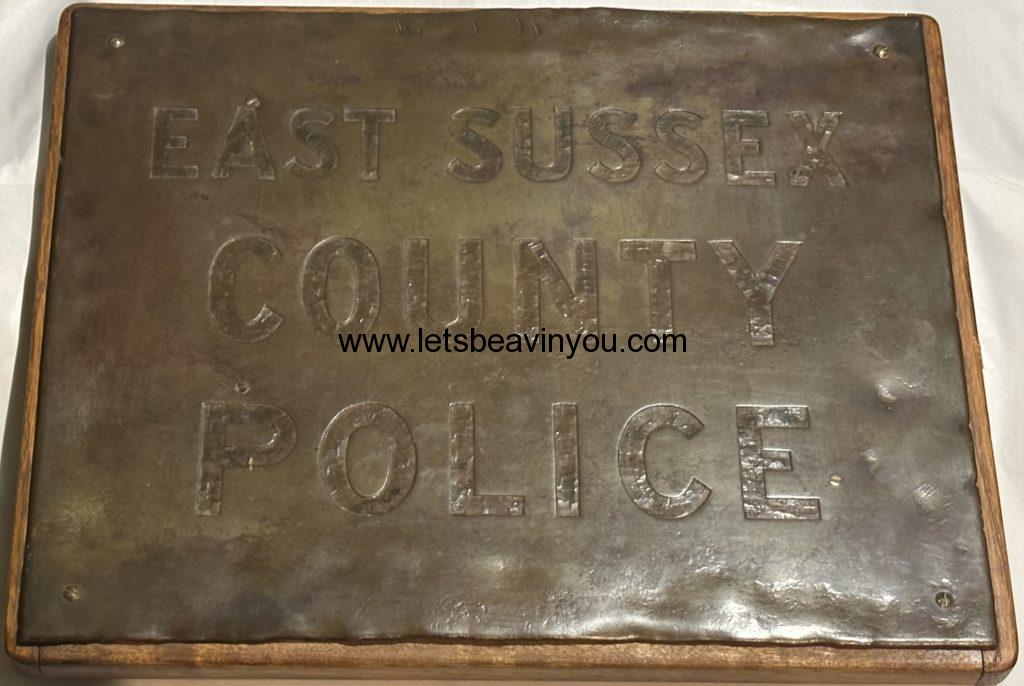
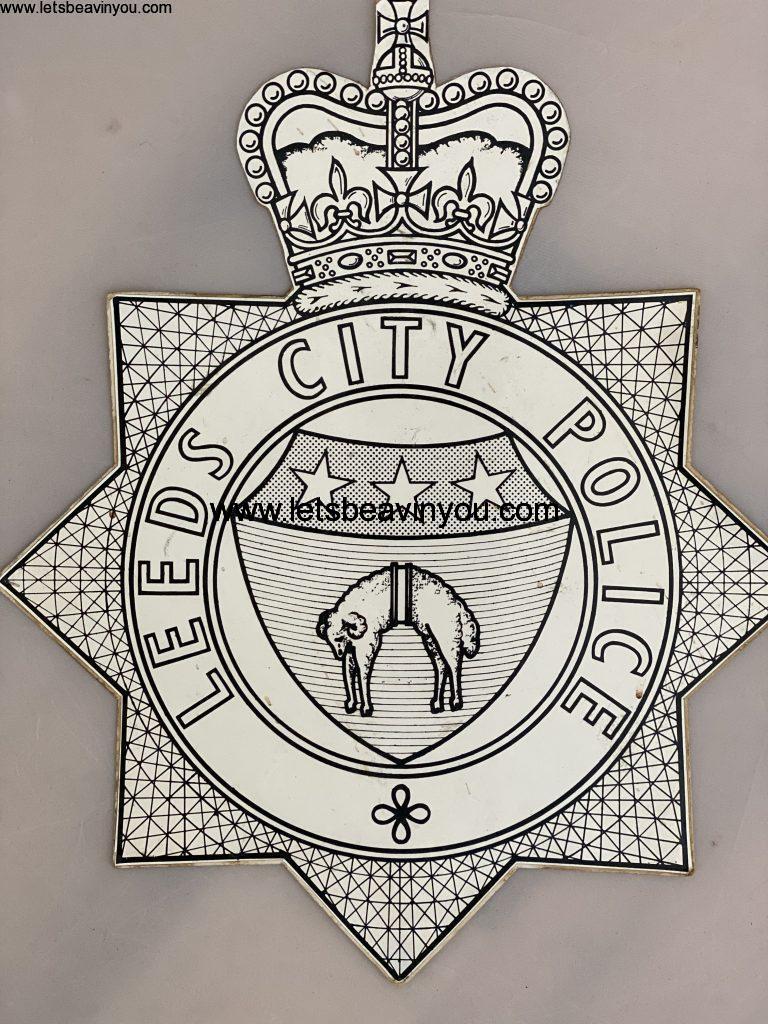
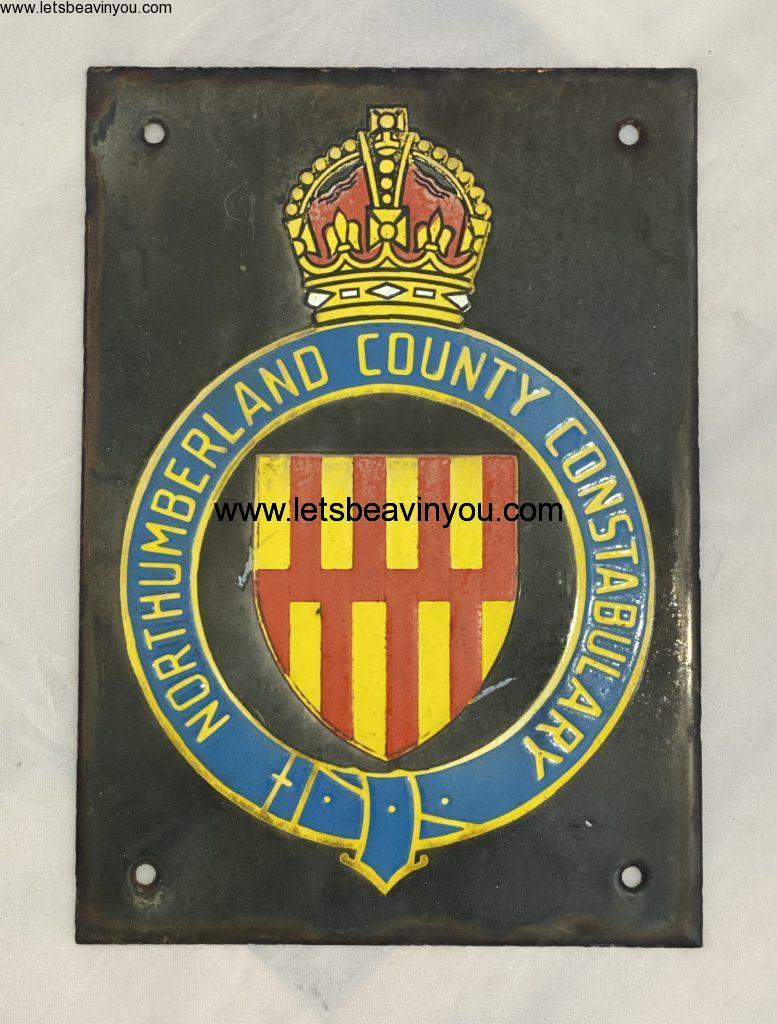
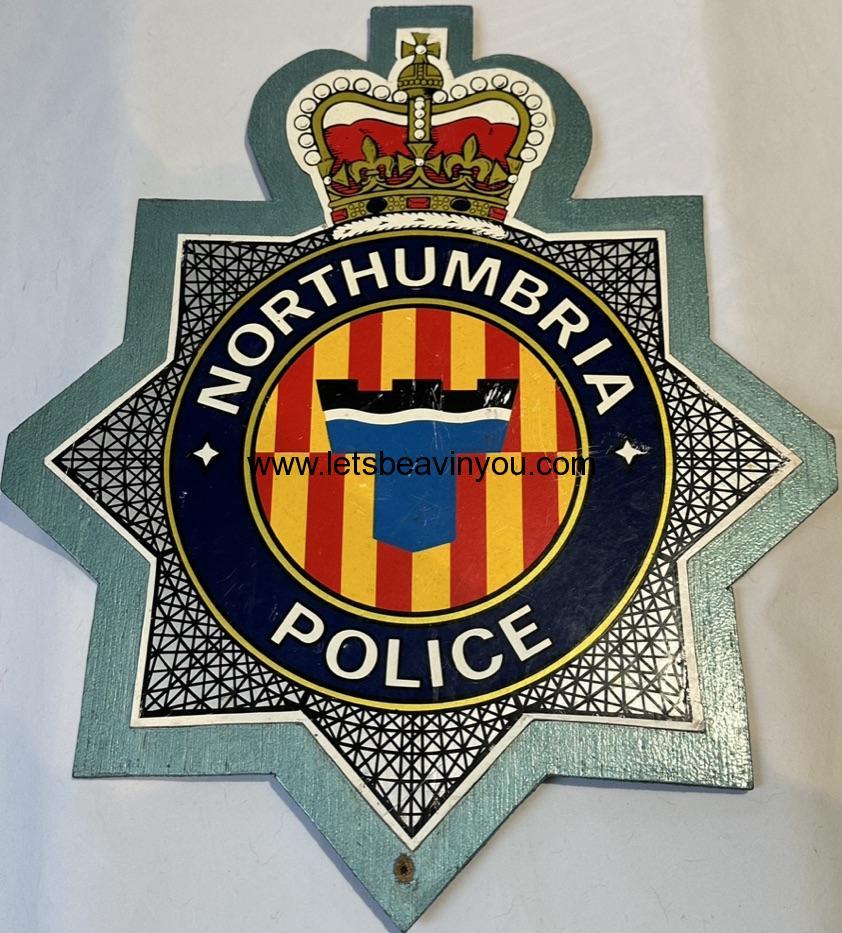
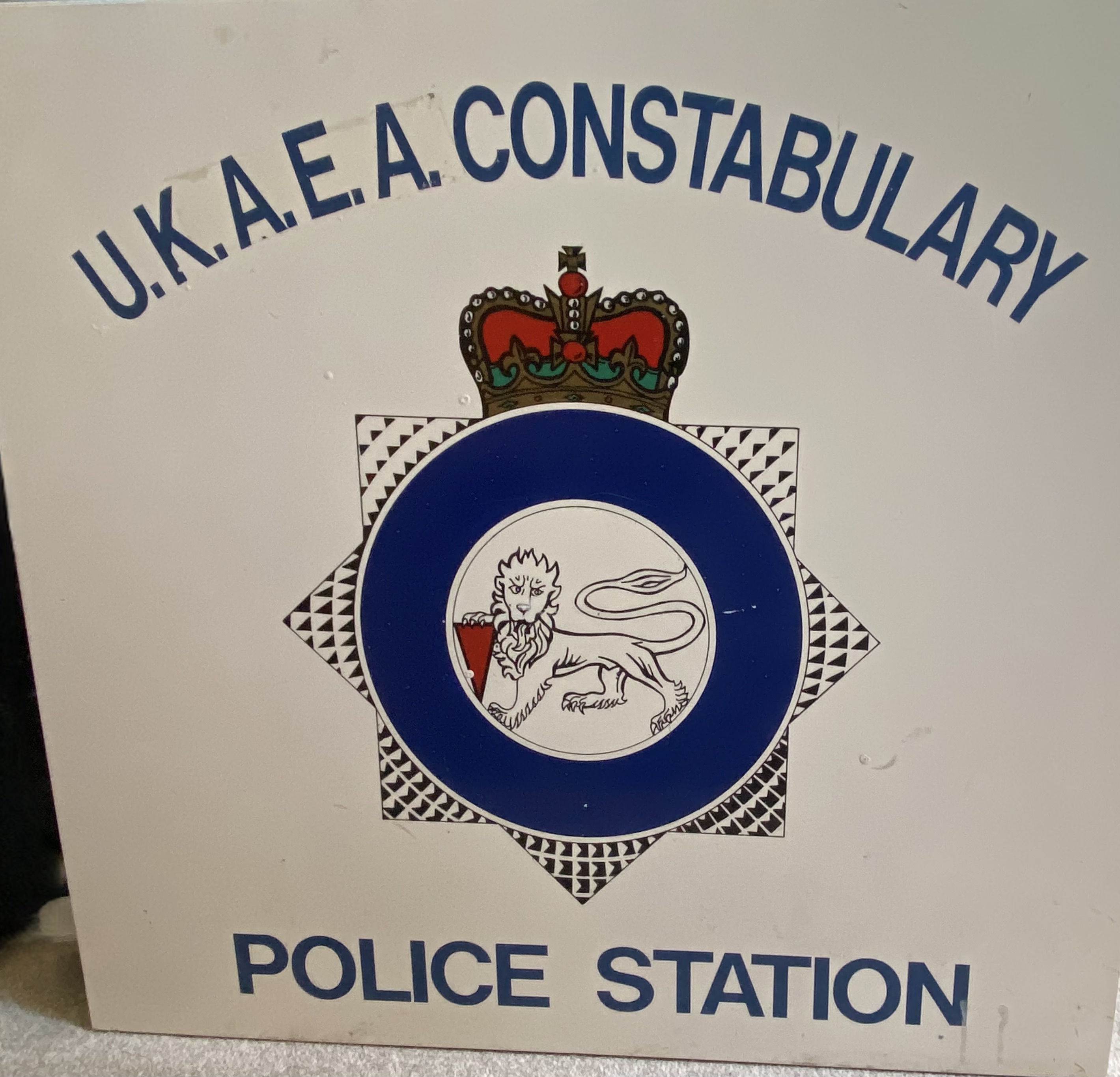
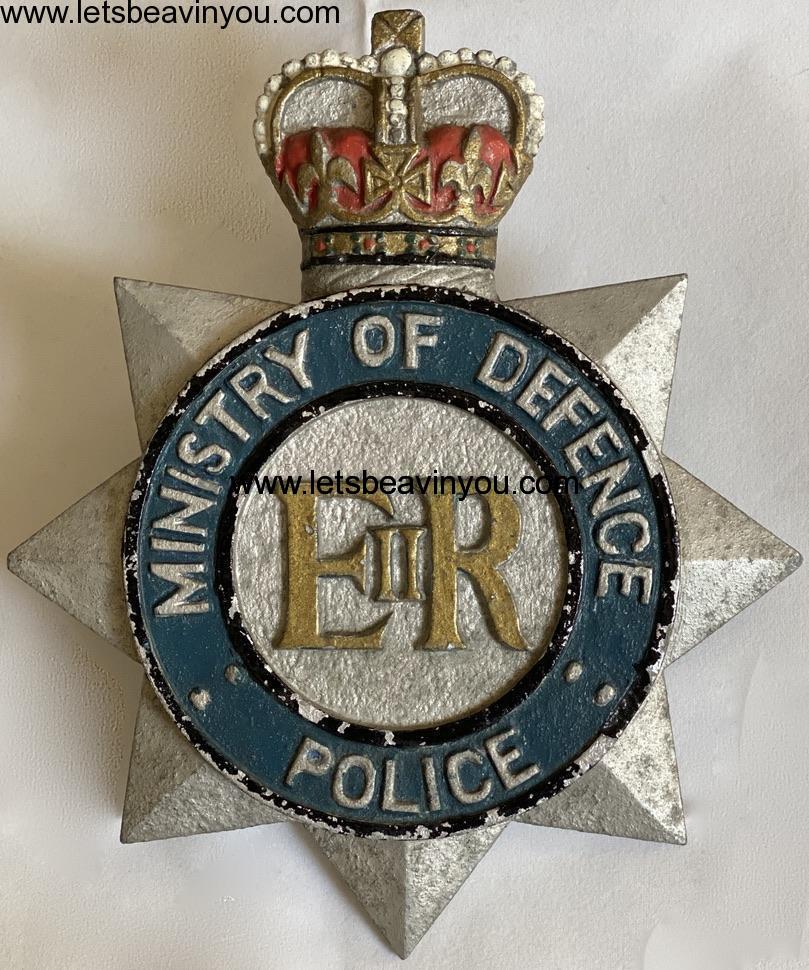
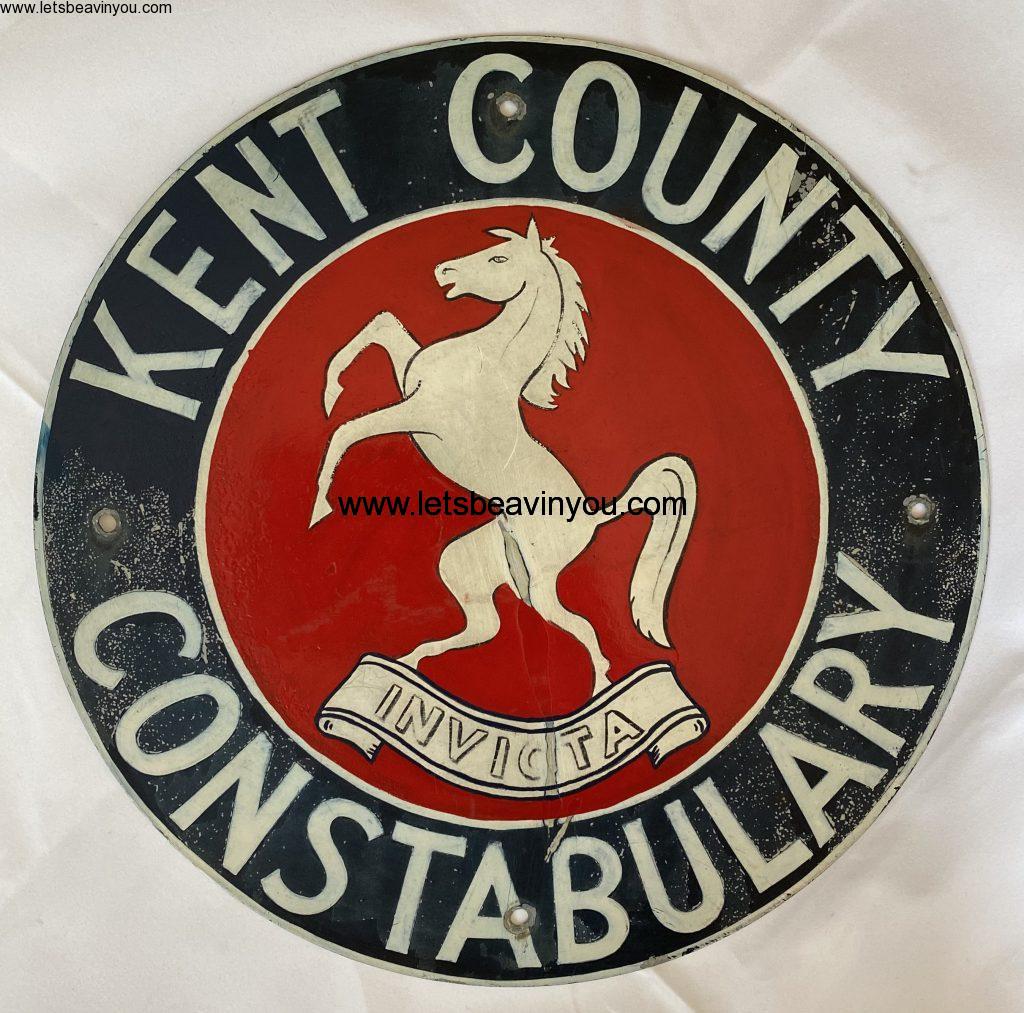
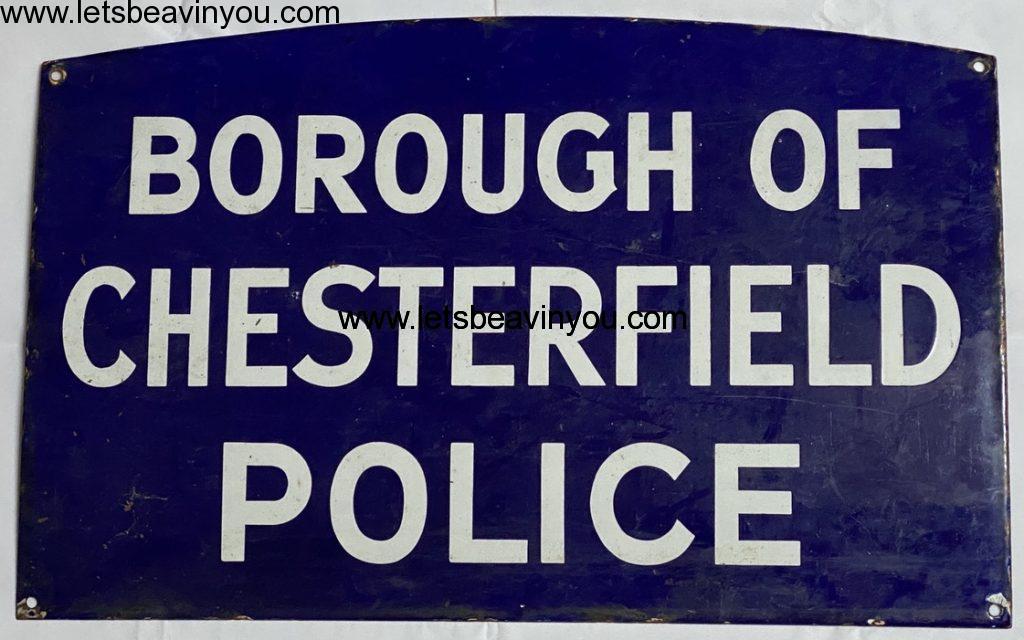
And finally, some generic crests, probably used by country police forces upto the 1950s.
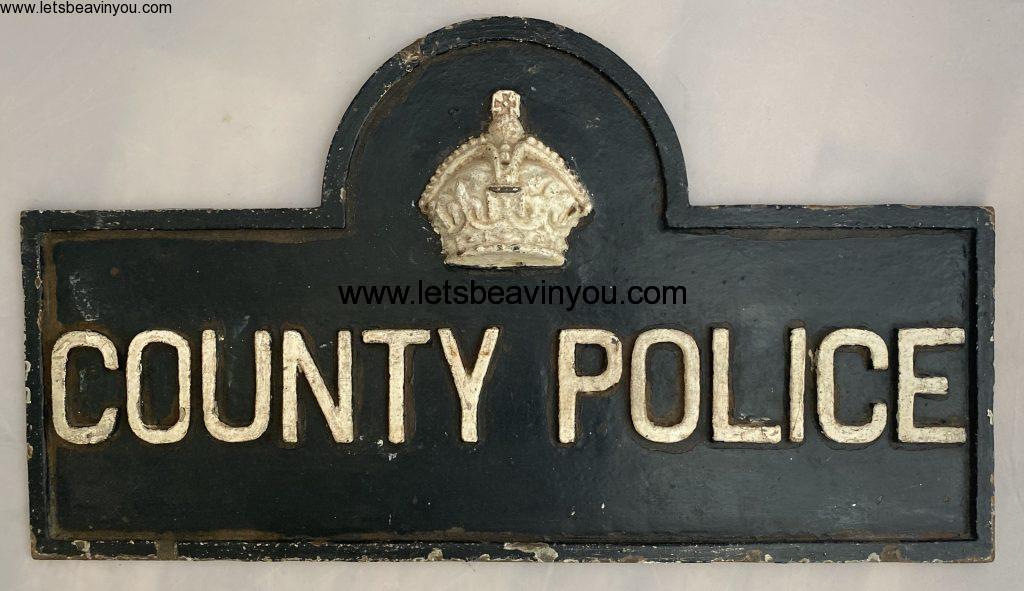

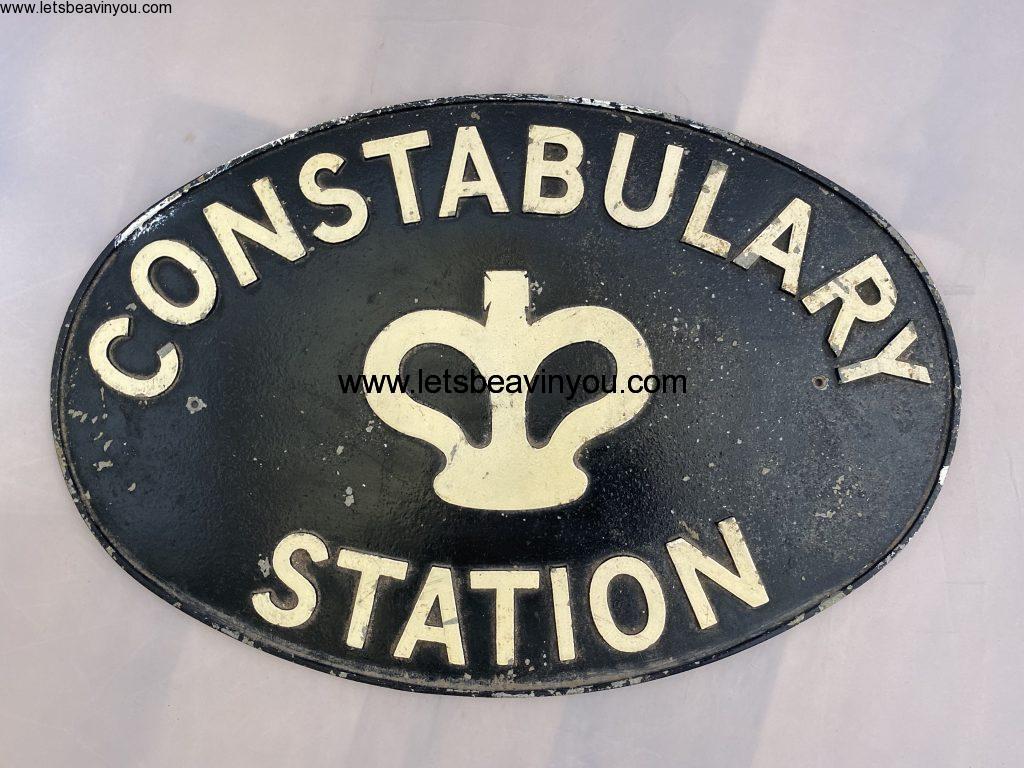
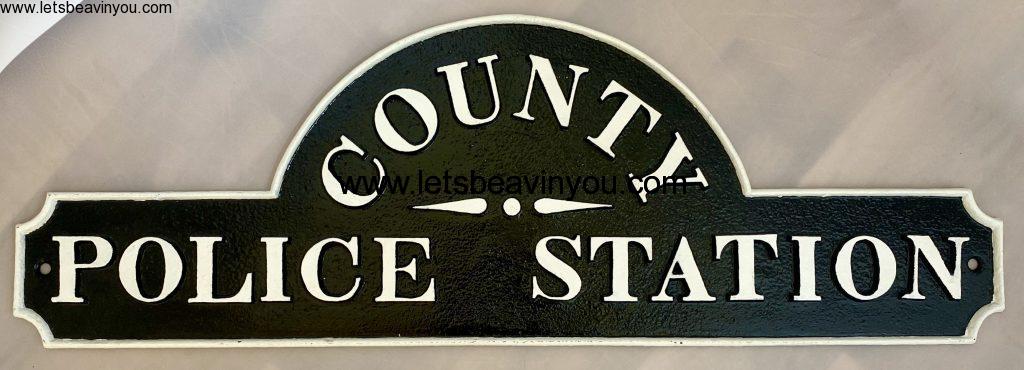

And to finish off this England and Wales section, it’s only right to add the largest force in the country, the MPS.
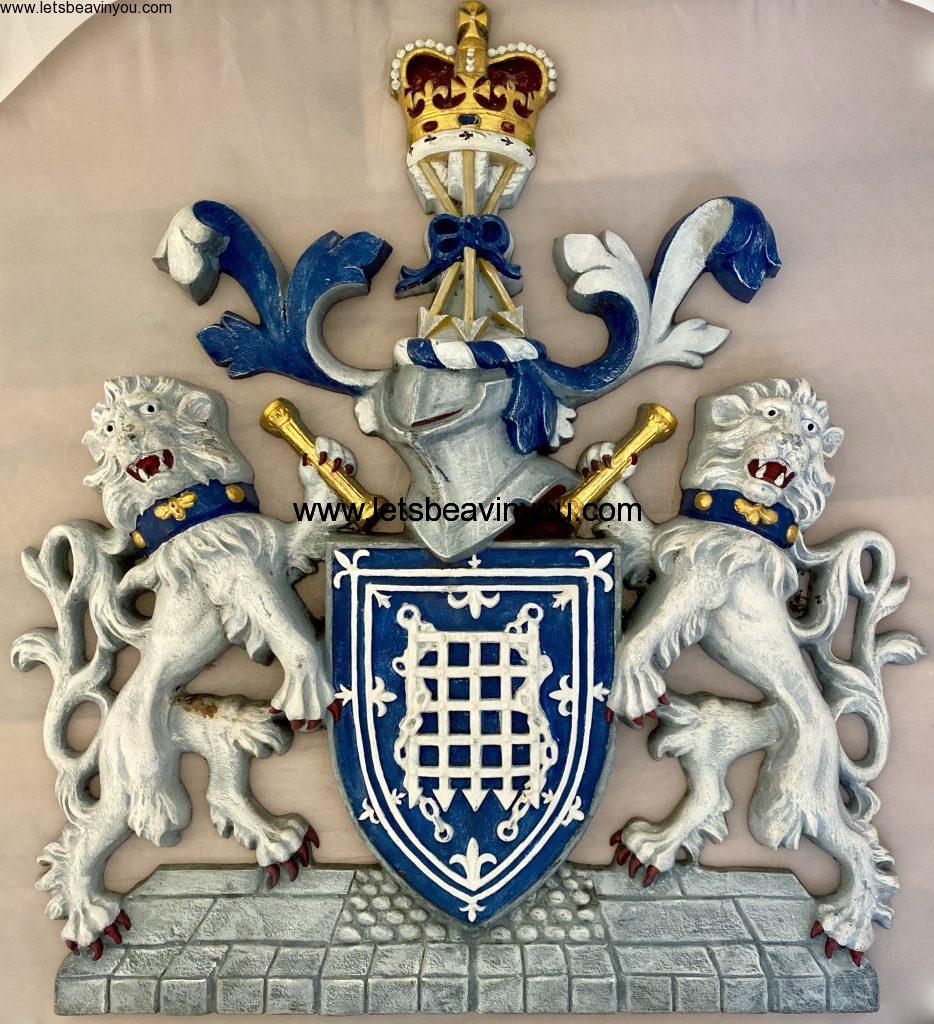
Non UK and Military Crests
I’ve tried keeping away from military crests, not because I don’t like them, but just to try and keep the collection managable. That said, sometimes even I fail, particularly if its a rare crest such as the two RMP examples below. Generally these are printed on aluminium and vary in size from a relatively acceptable 35×24 inches in the Skopje example, to that of it’s 6th Regiment big brother which is 48×36. The MOD OCU HQ example is an even more unmanagable 57×31 which does make storage and display a bit of a problem.
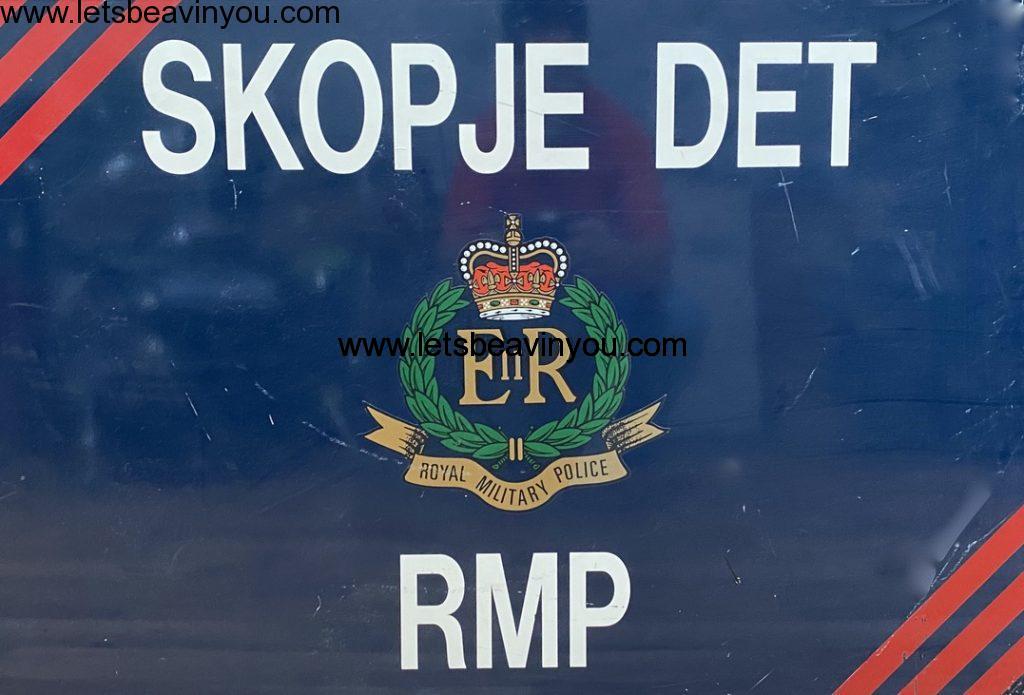
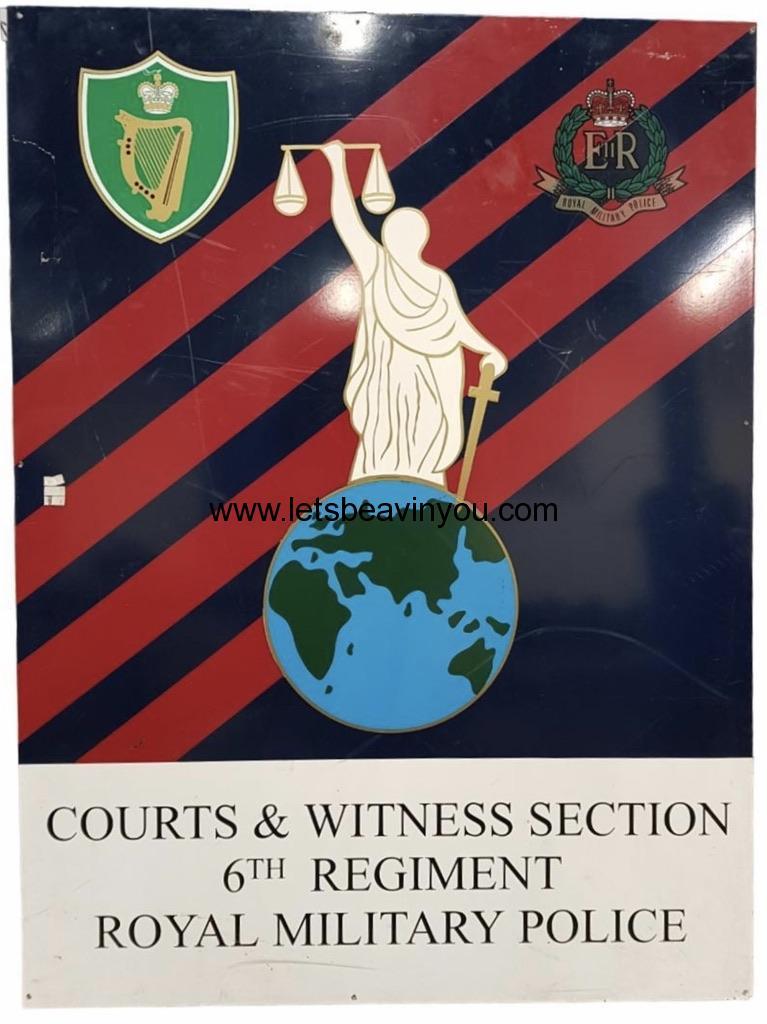
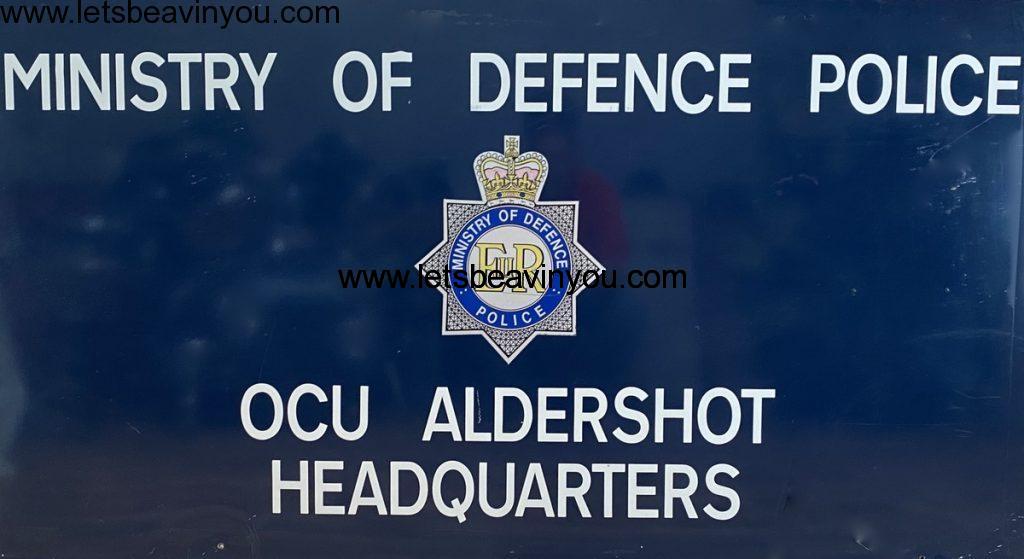
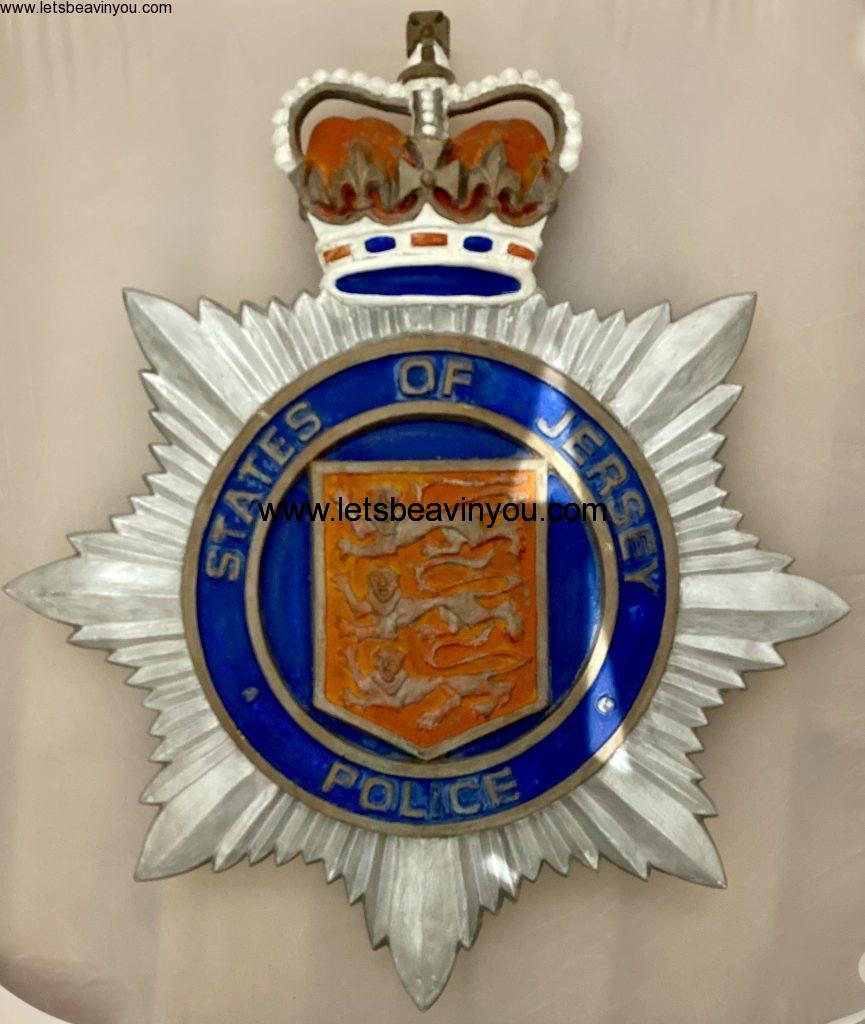
New Zealand
A Victorian example in copper or brass (note the small patches of verdigris)
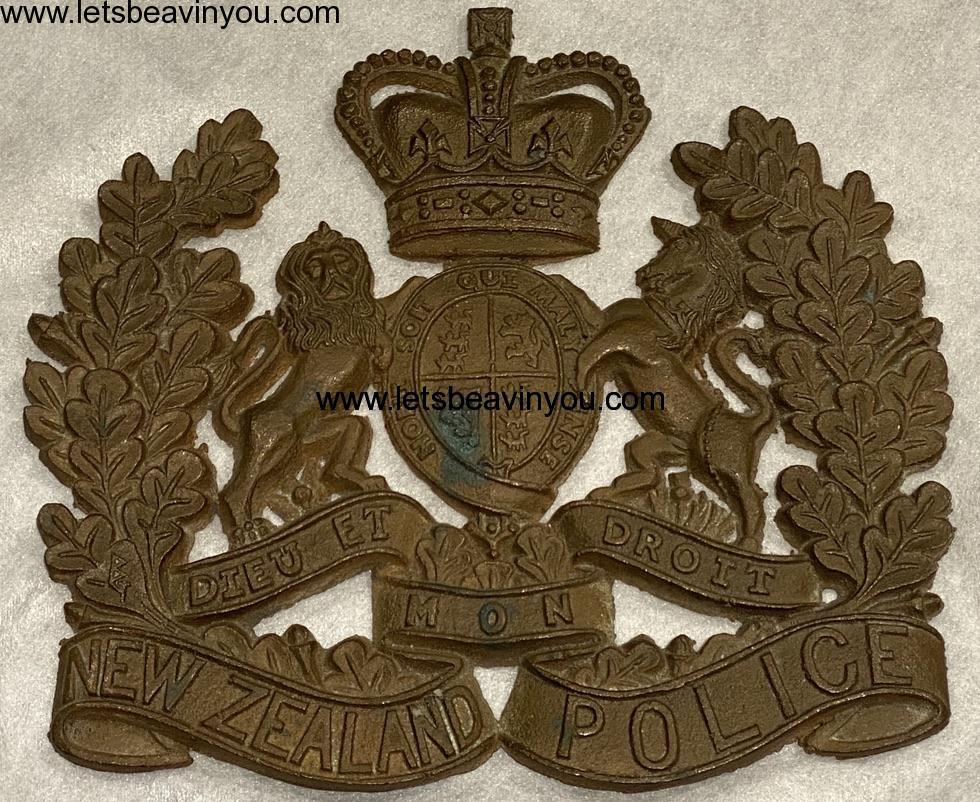
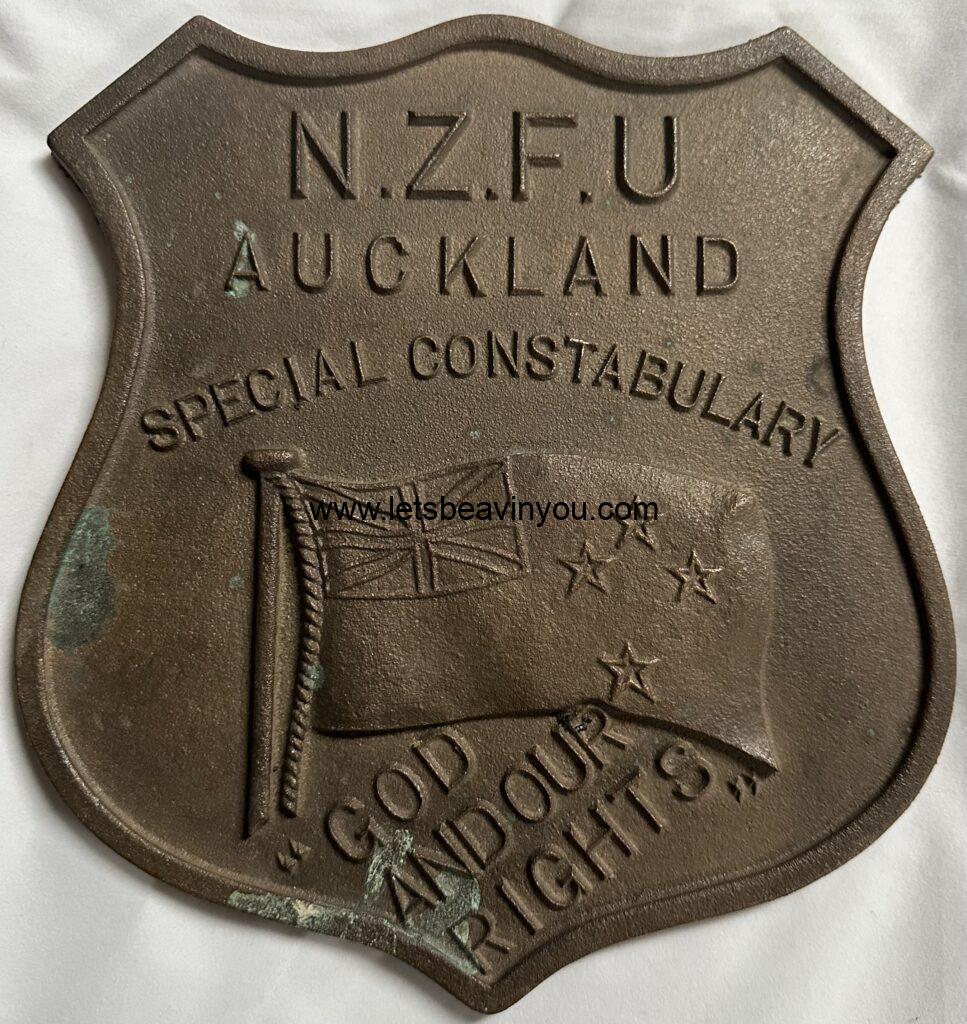
Rhodesia: British South Africa Police (BSAP)
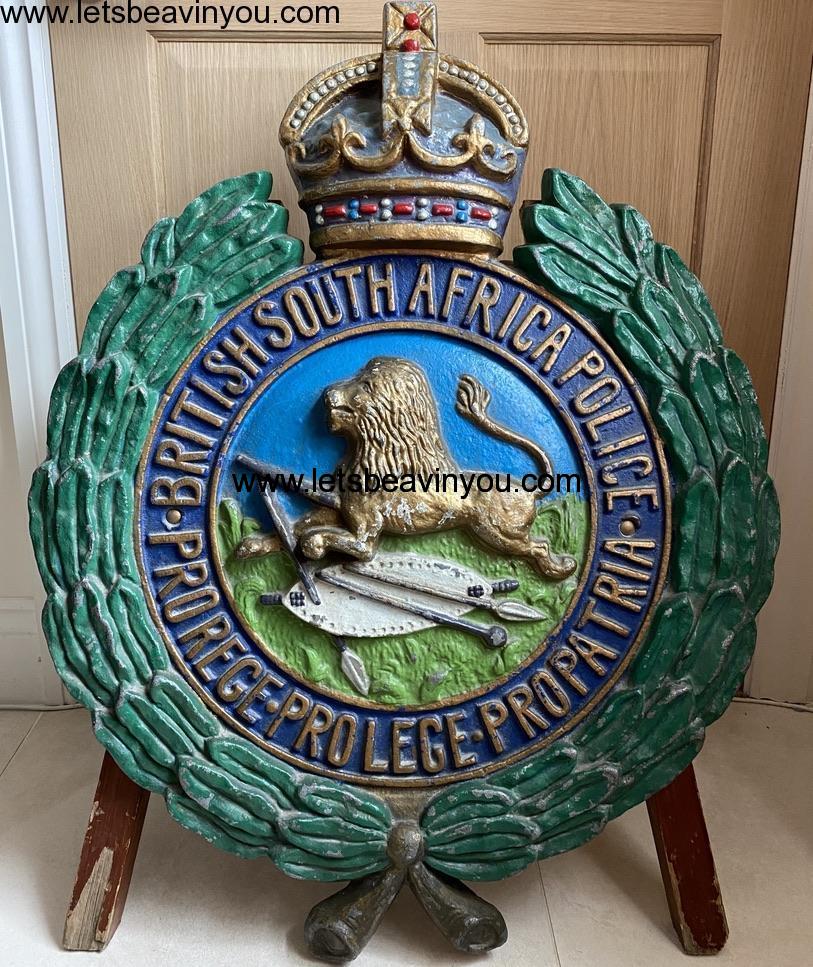
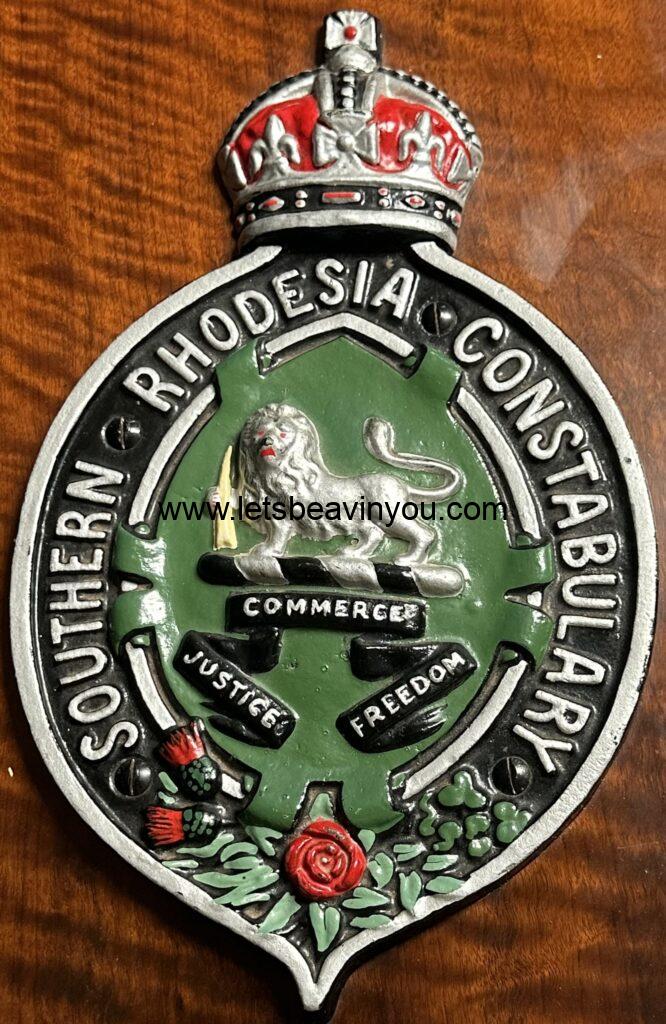
Papua New Guinea
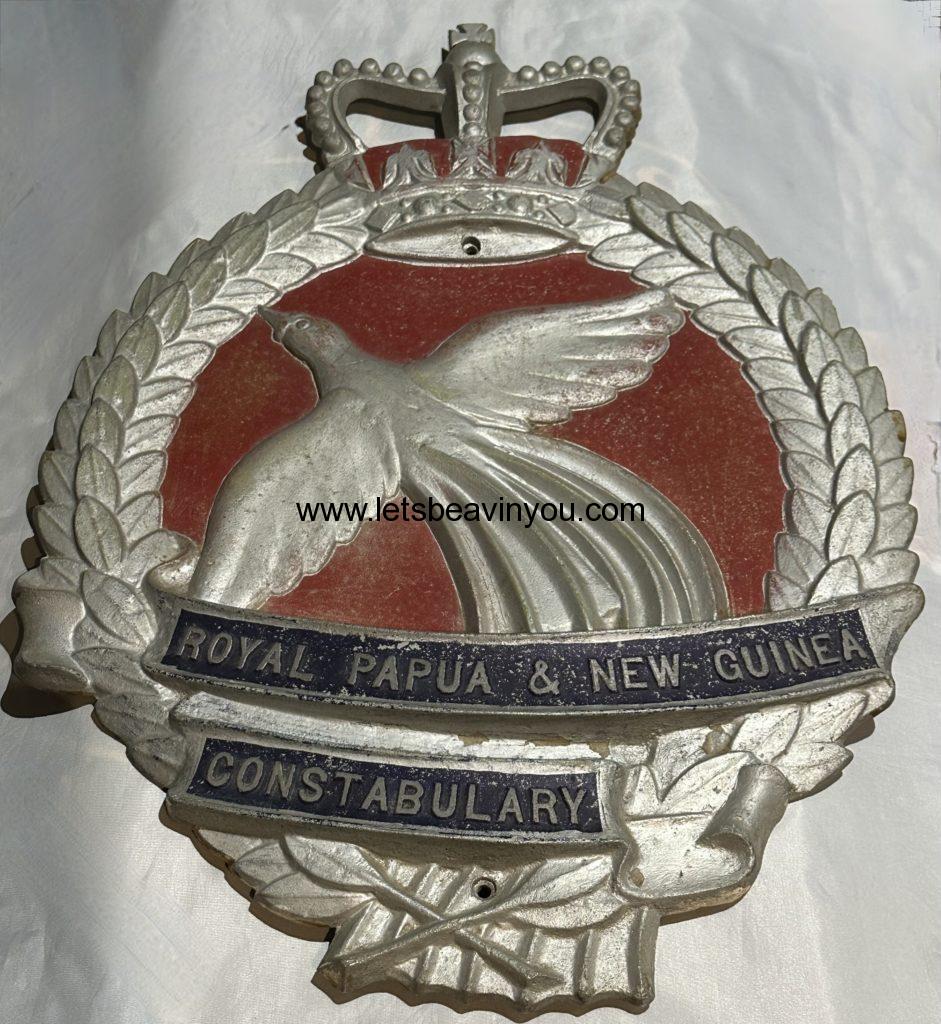
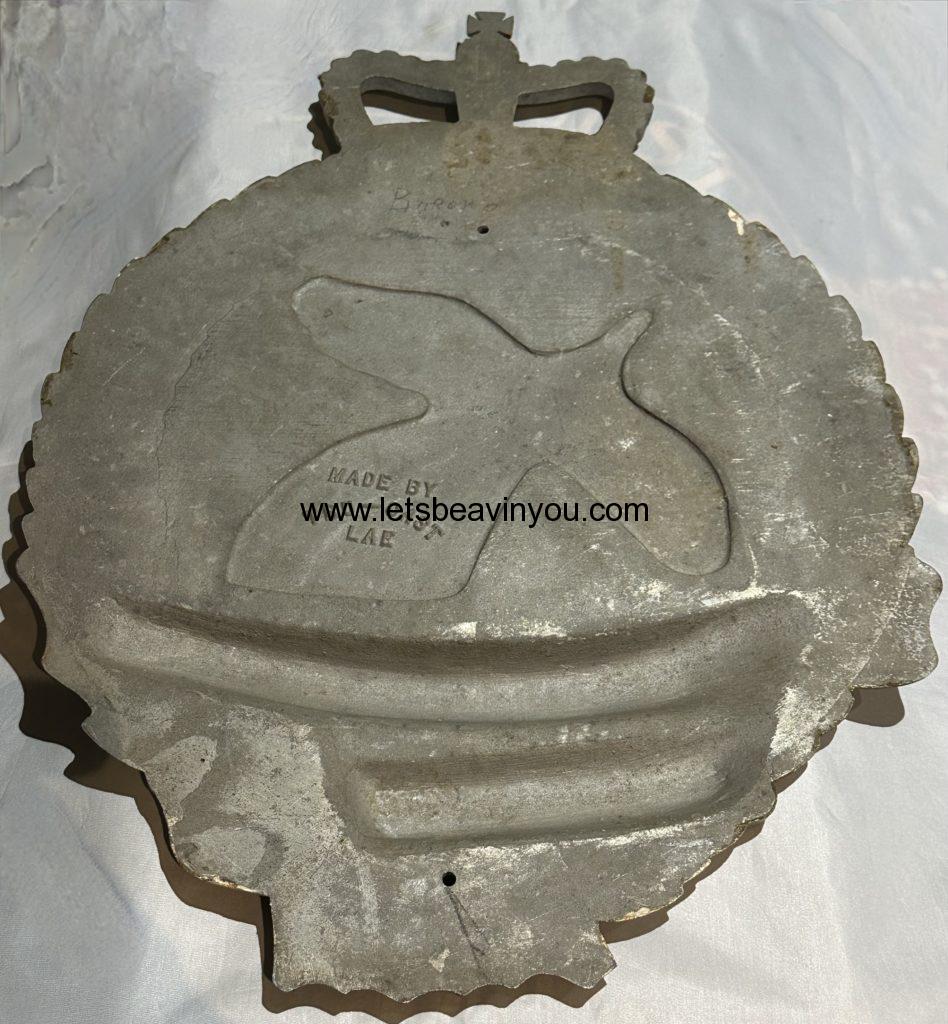
Germany
Given my interest in tschakos of the German police, it was perhaps inevitable that I would eventually get a station crest. The German police would appear to have had a much greater level of standardisation than their UK counterparts and German crests are almost universally enamelled on tin or aluminium. I’m sure that there are some out there that break this rule, but I haven’t seen them yet.
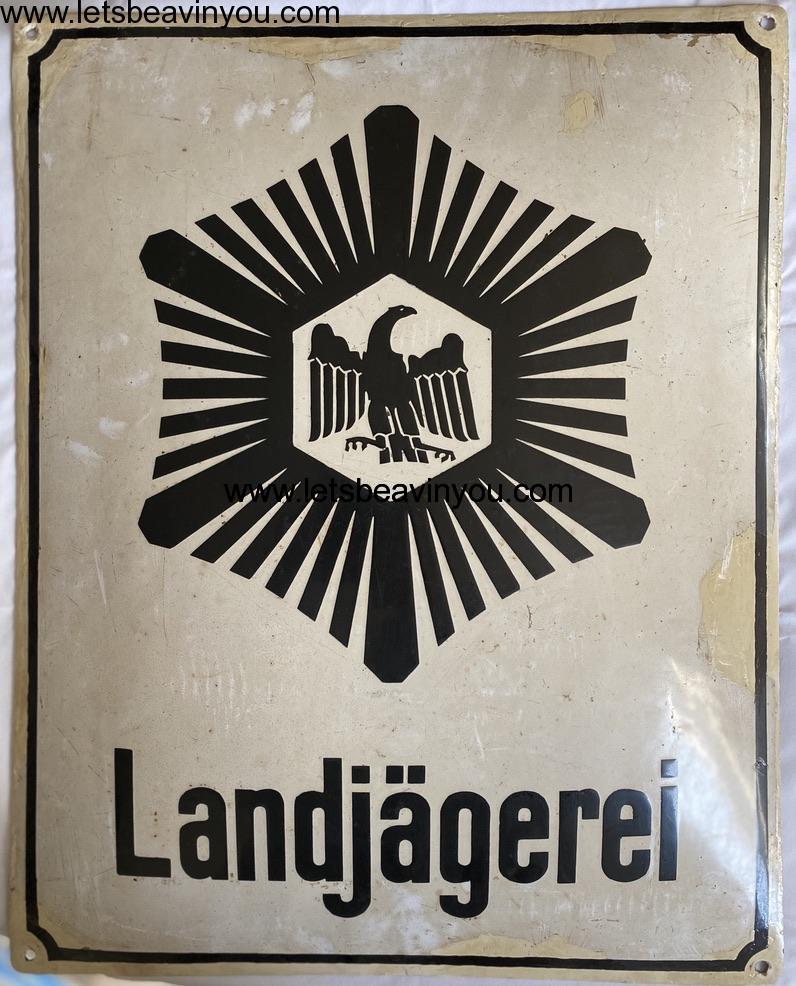
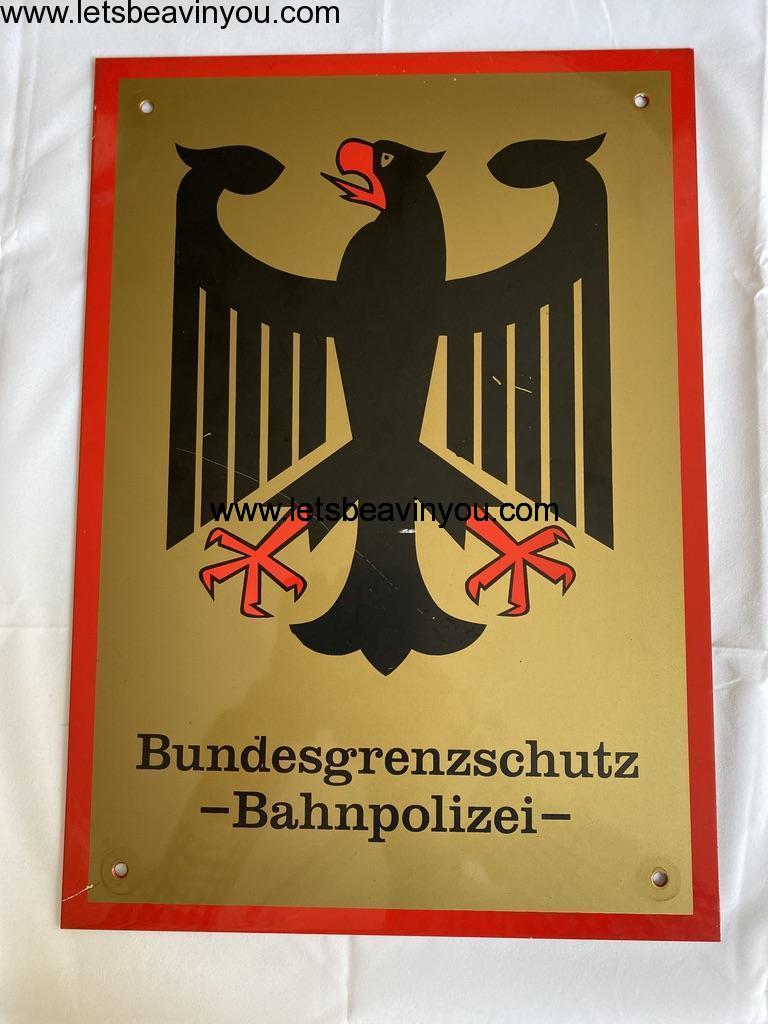
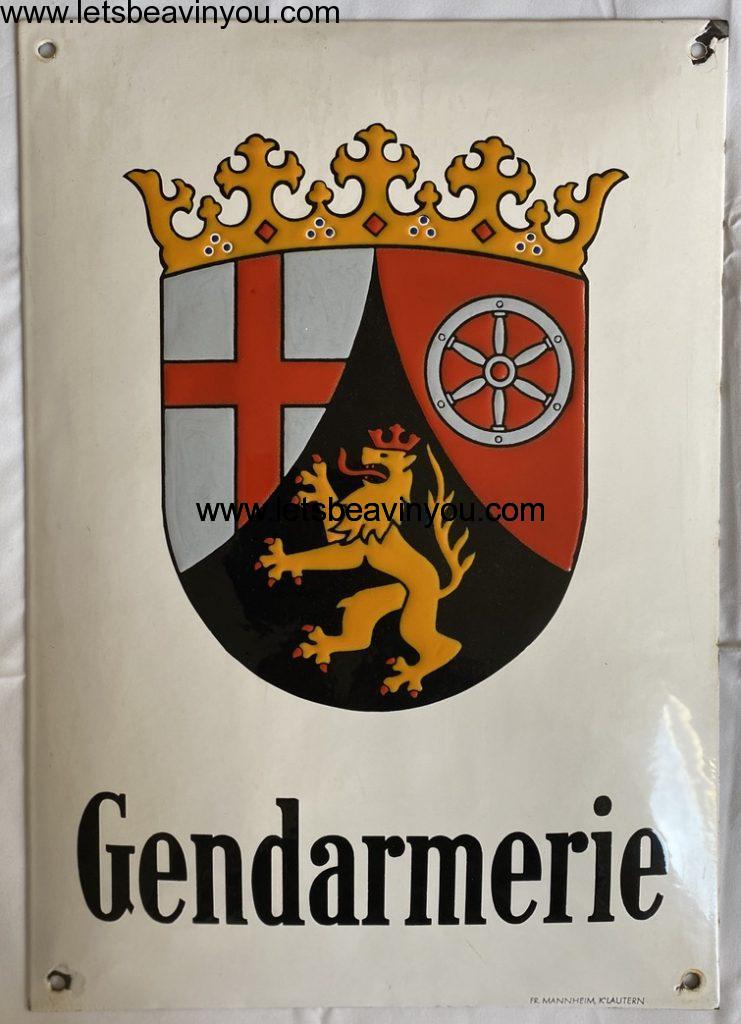
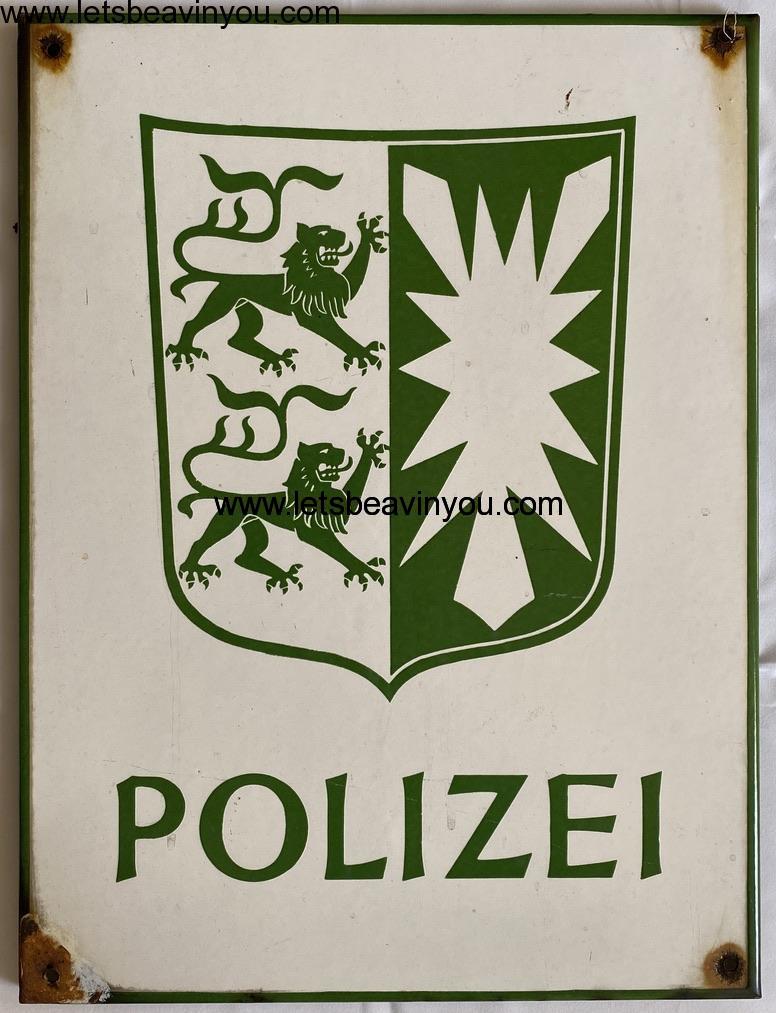
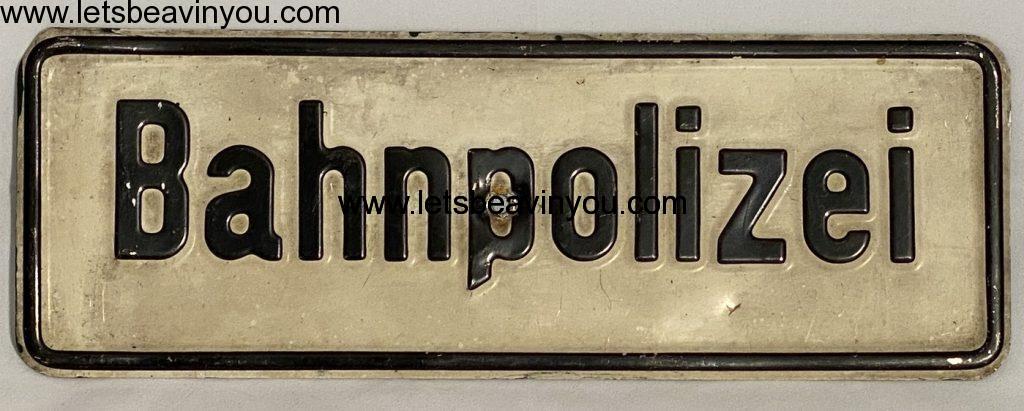
I hope that you have enjoyed looking at these crests. I am hoping that in time I will make the effort to learn more of the history of the British crests in particular and to that end I would greatly value any information regarding them, or sources where I might get to learn more about them. The following gallery includes examples and copies from Ireland and England.
<p> </p>These next two, while not actually police, seem to fit here. The NI Crest came from Crumlin Road Court House. The Irish State crest was obtained from an auction house in Belfast as a ‘prisoner made Republican Plaque’.
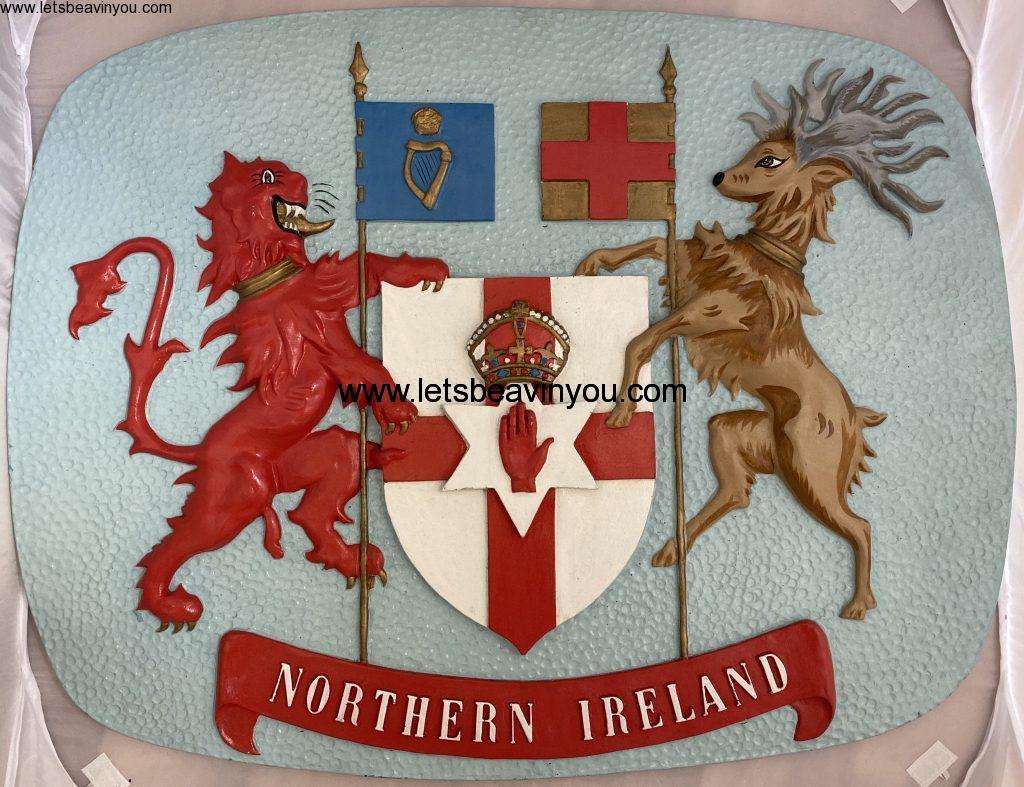
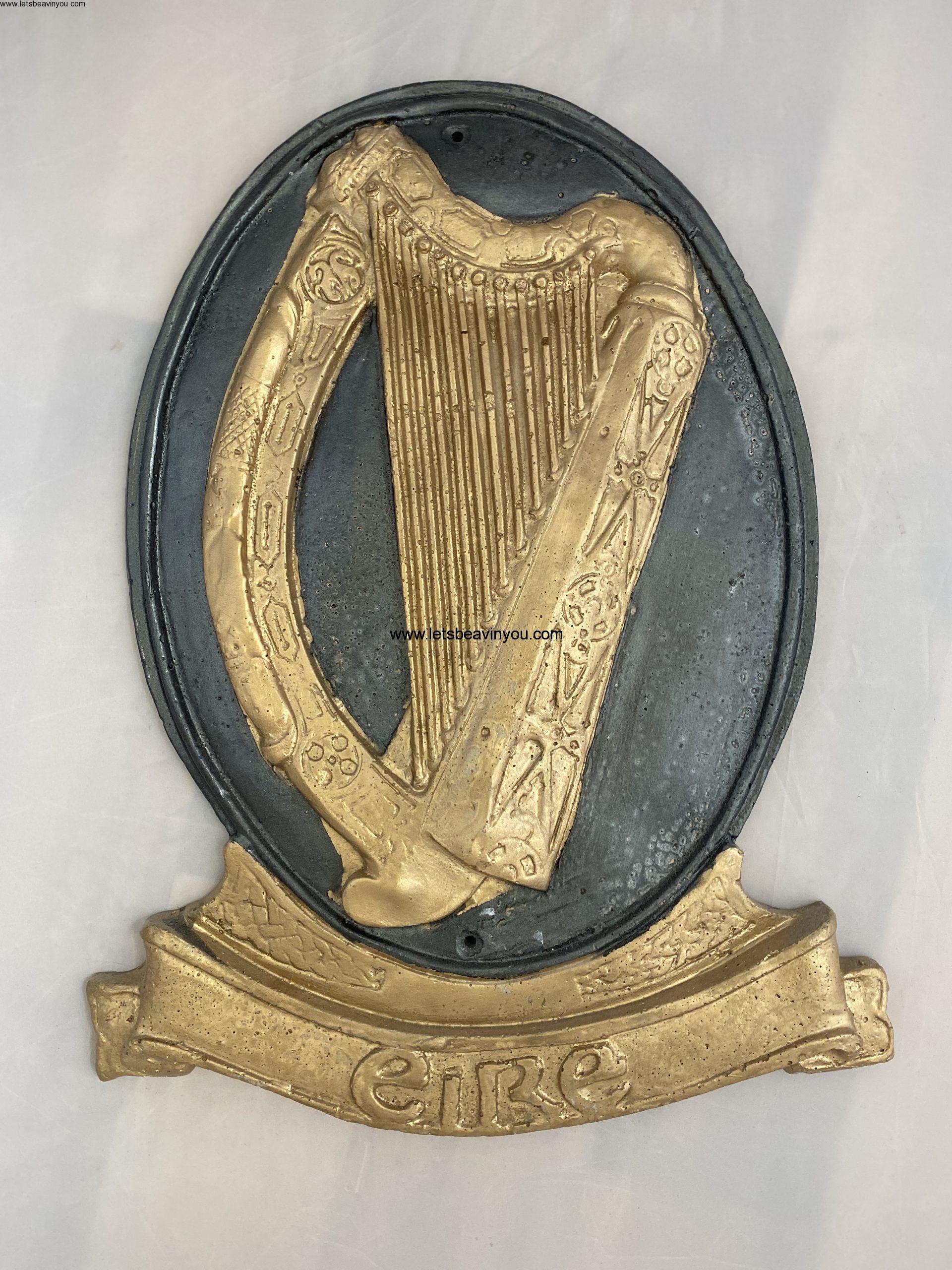
Next phase of the project will be the upload my library of force crests that I’ve discovered (mostly on the internet), but don’t actually have. Always happy to receive another one if you don’t want to keep yours!

